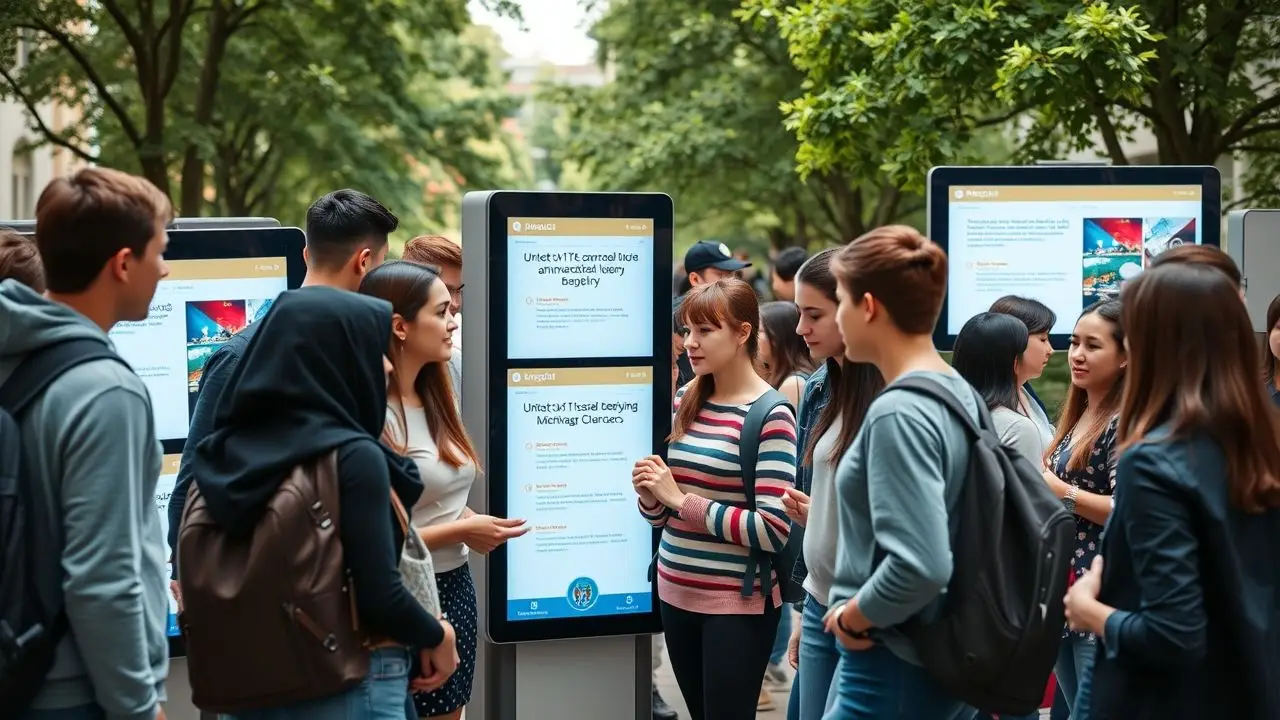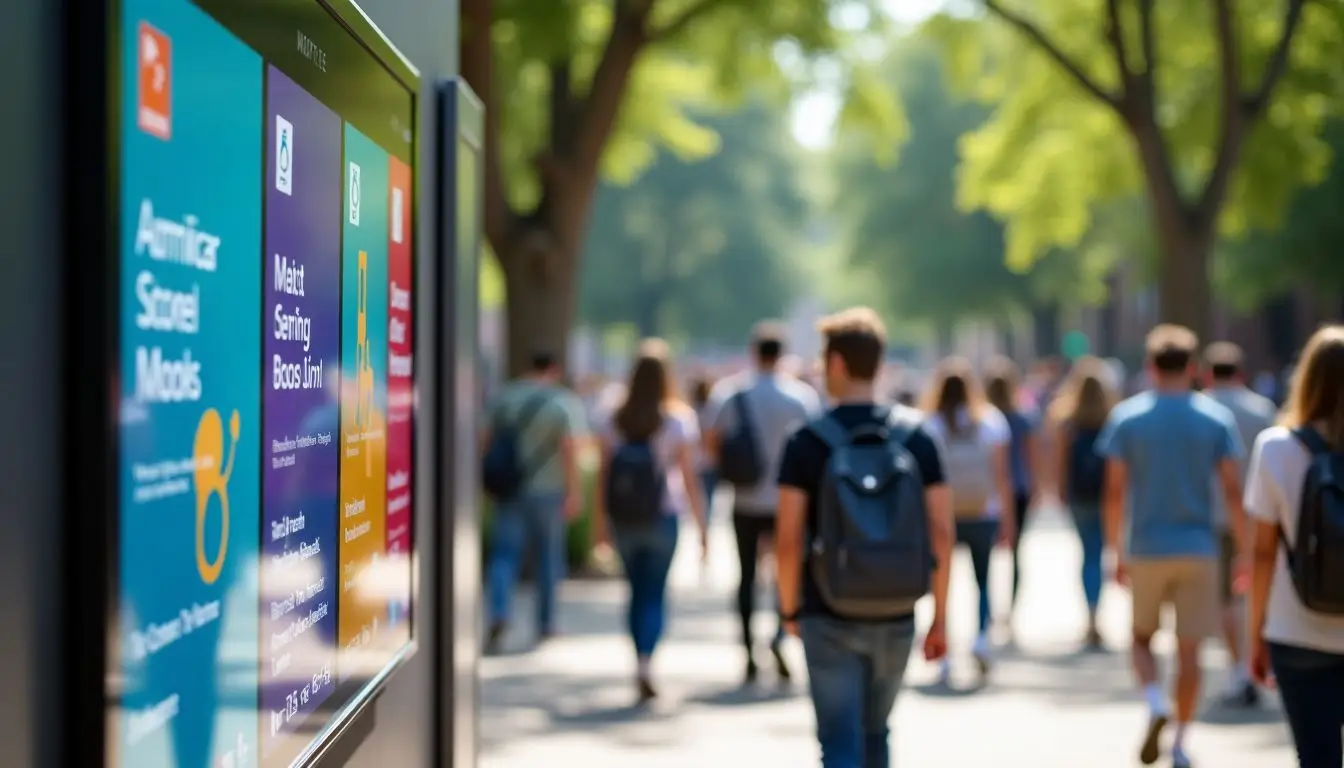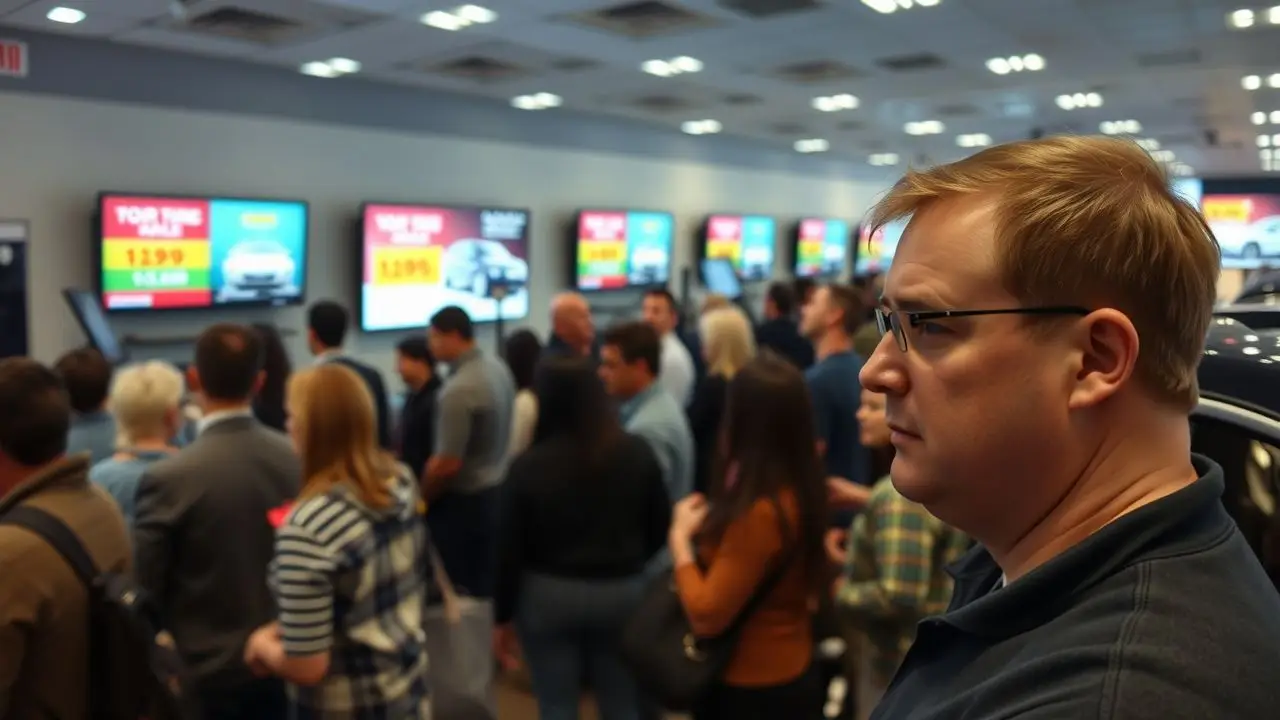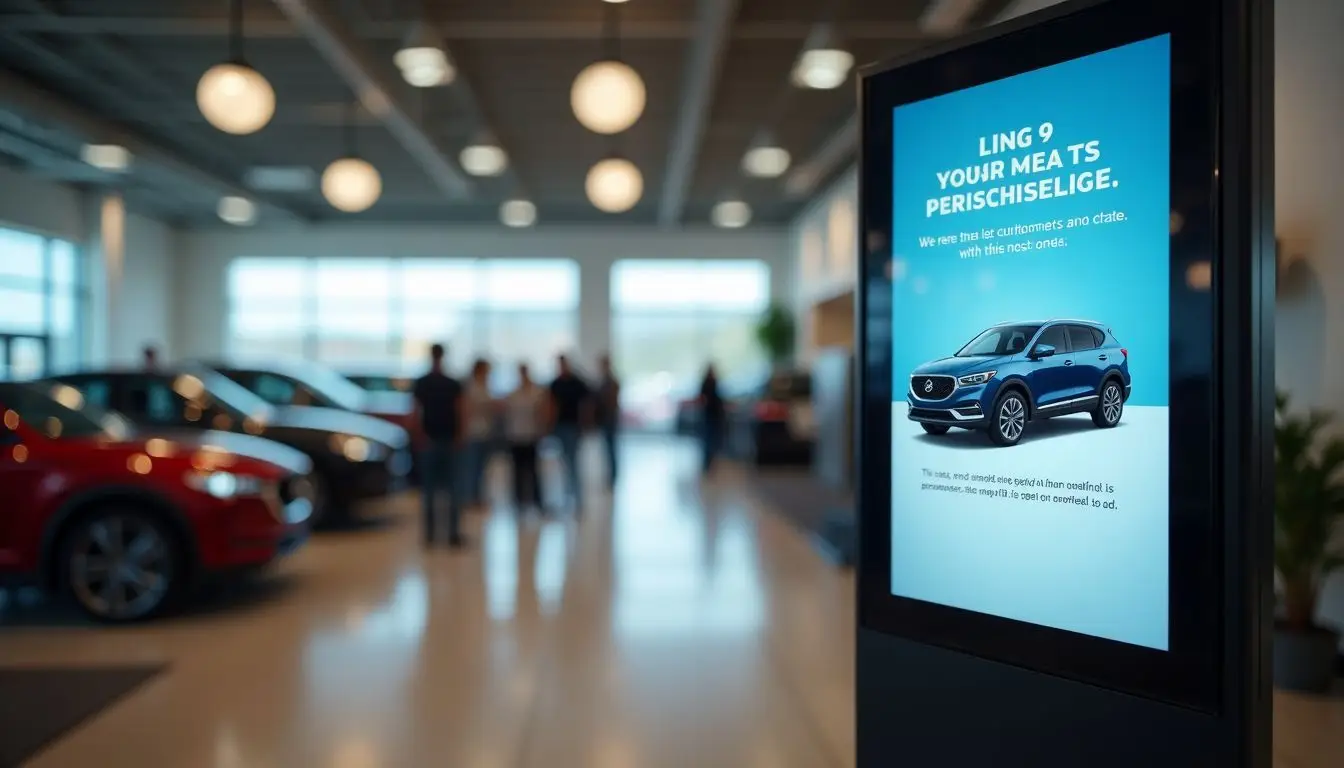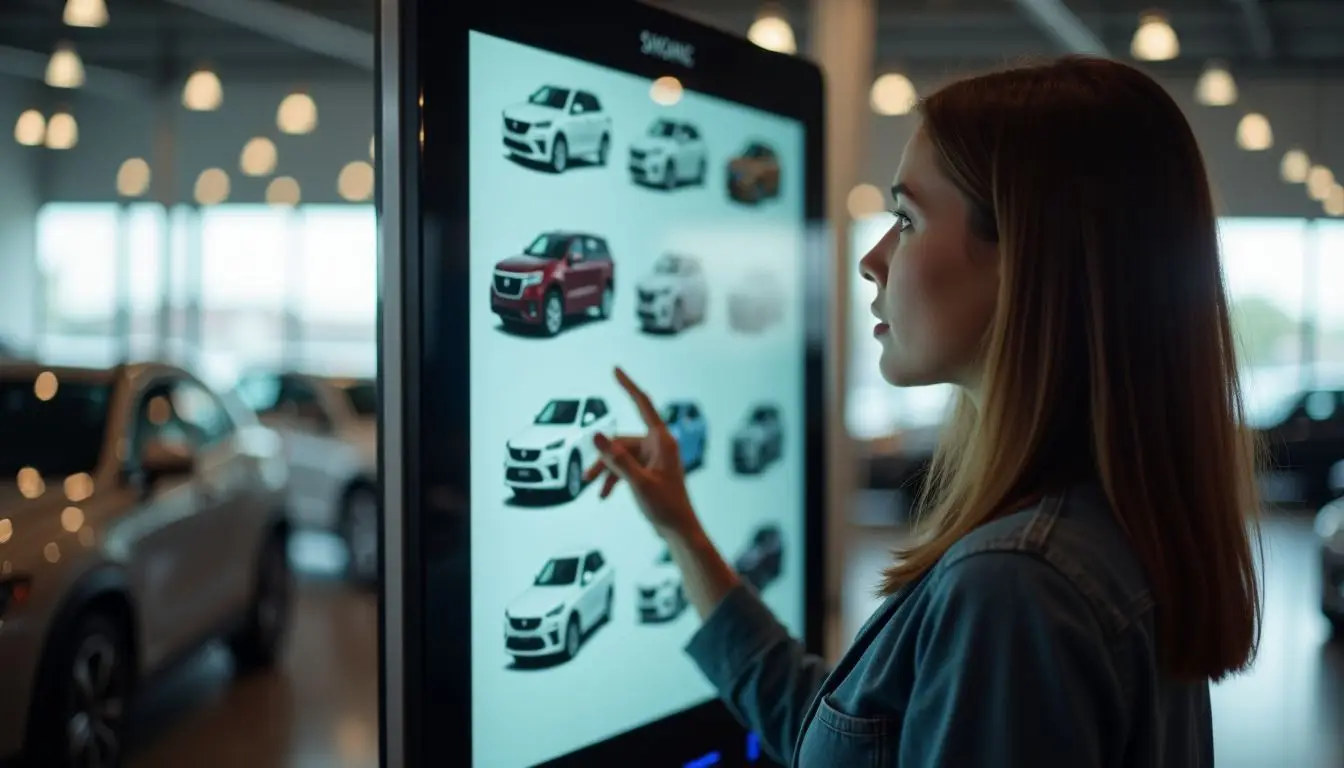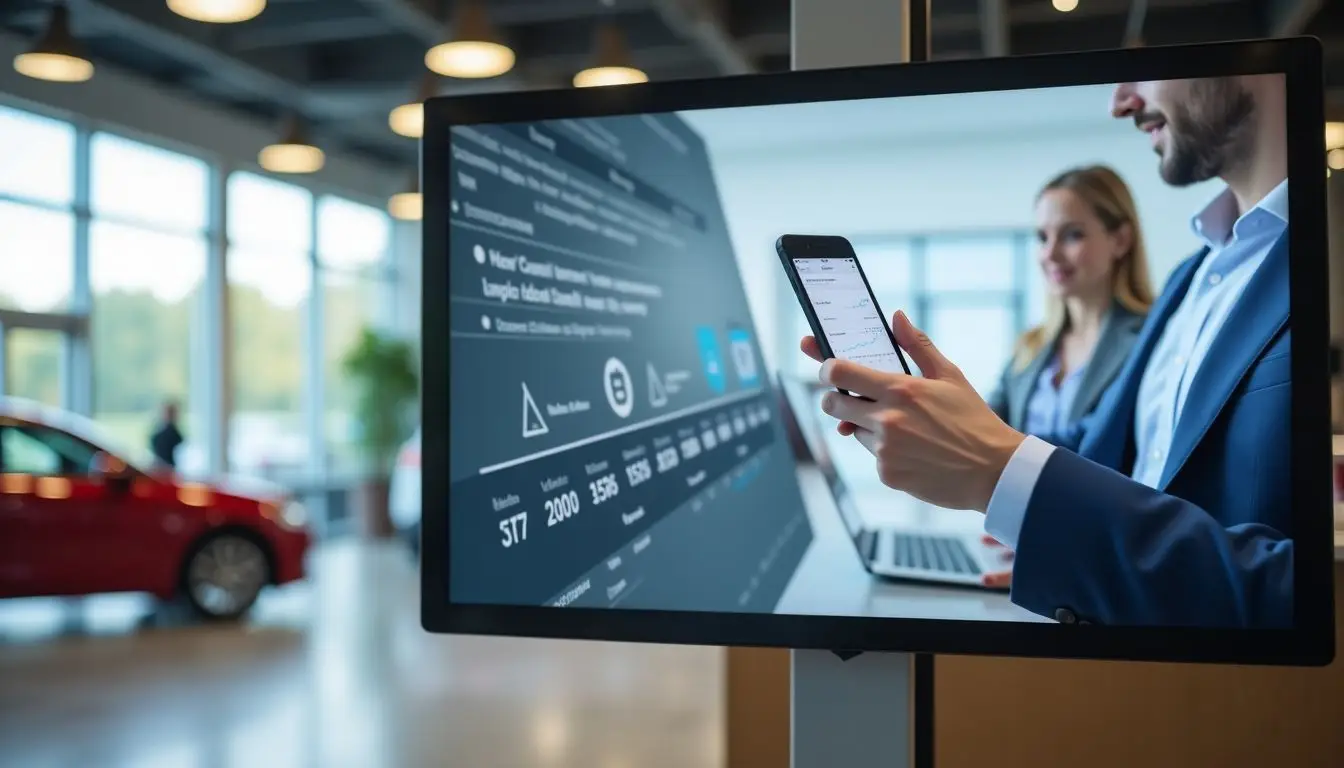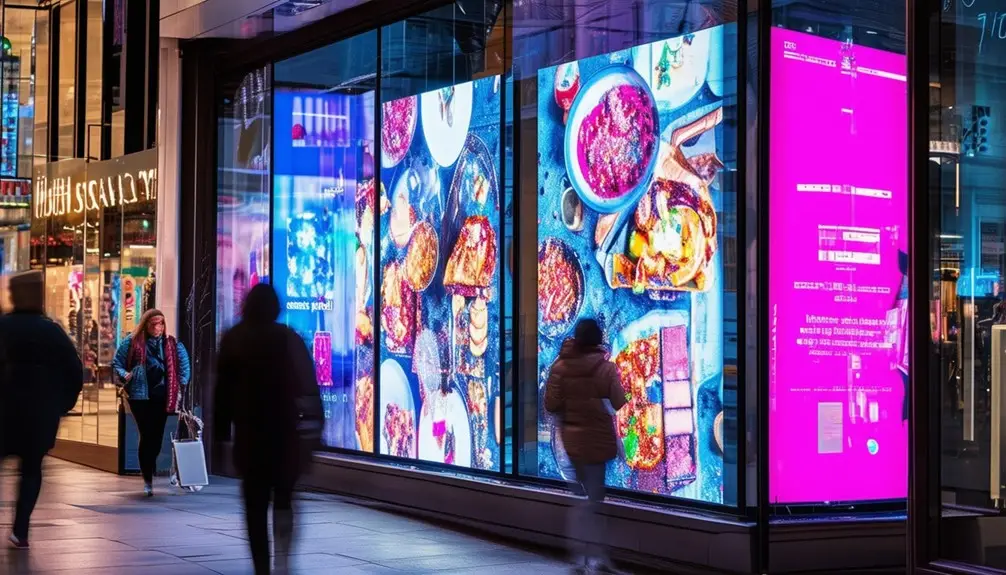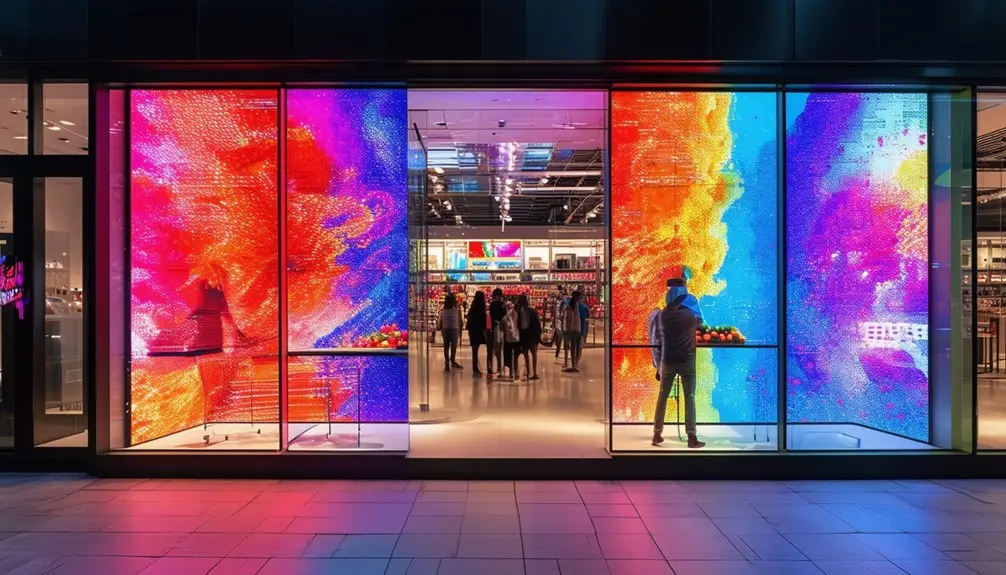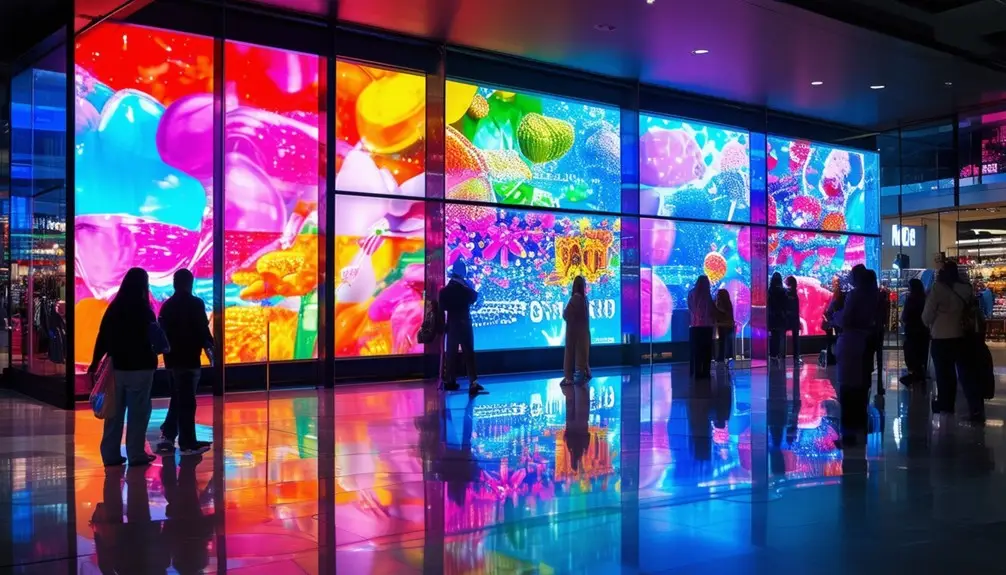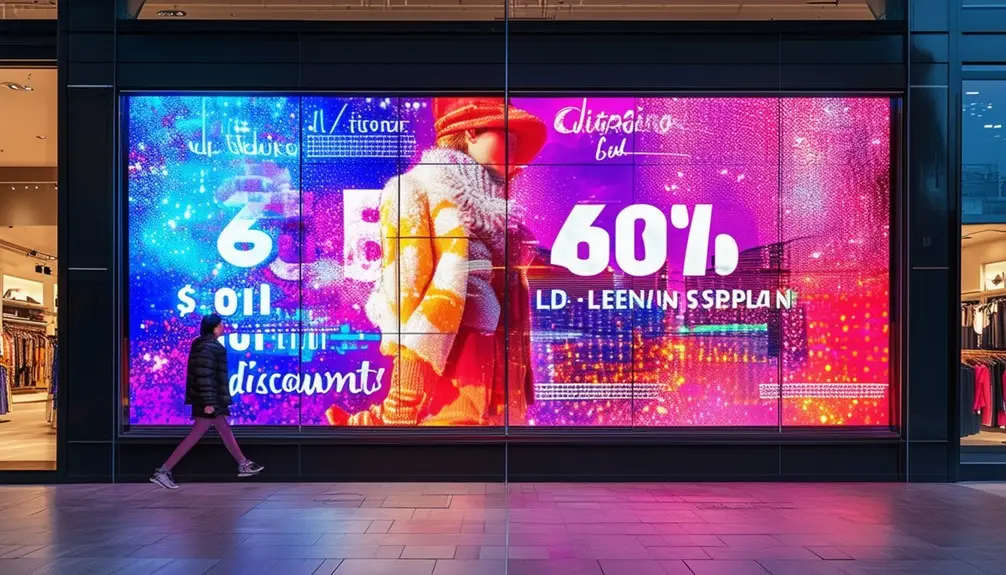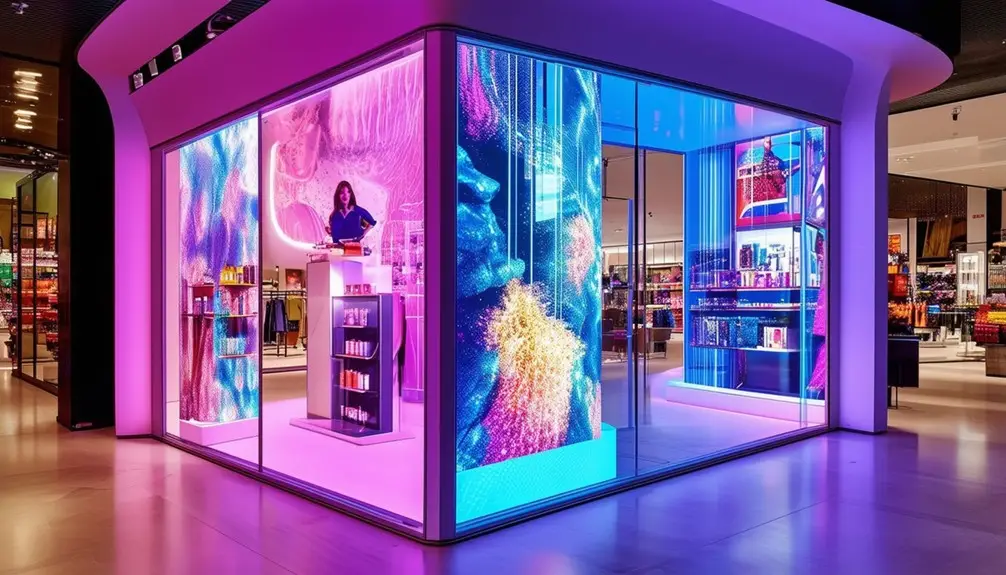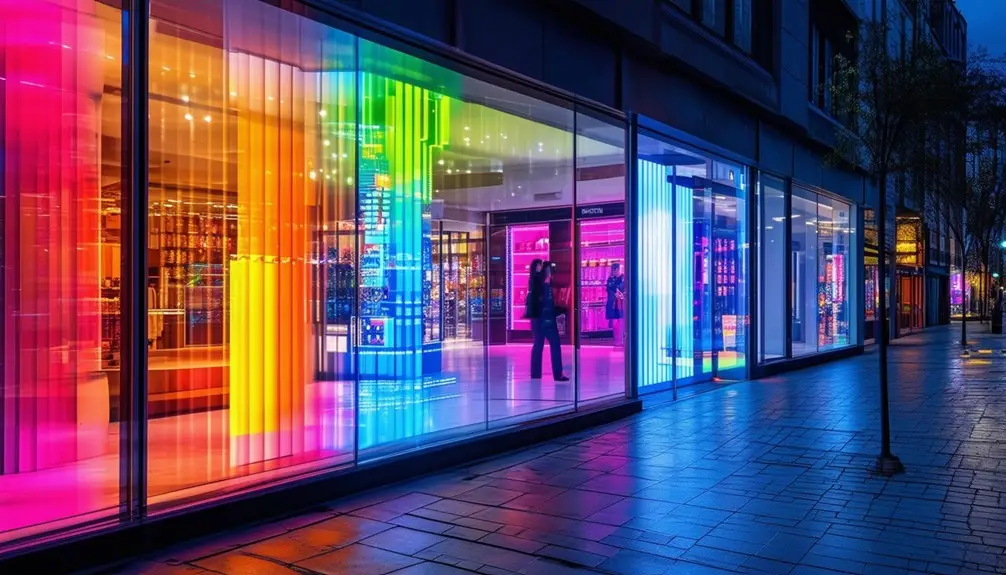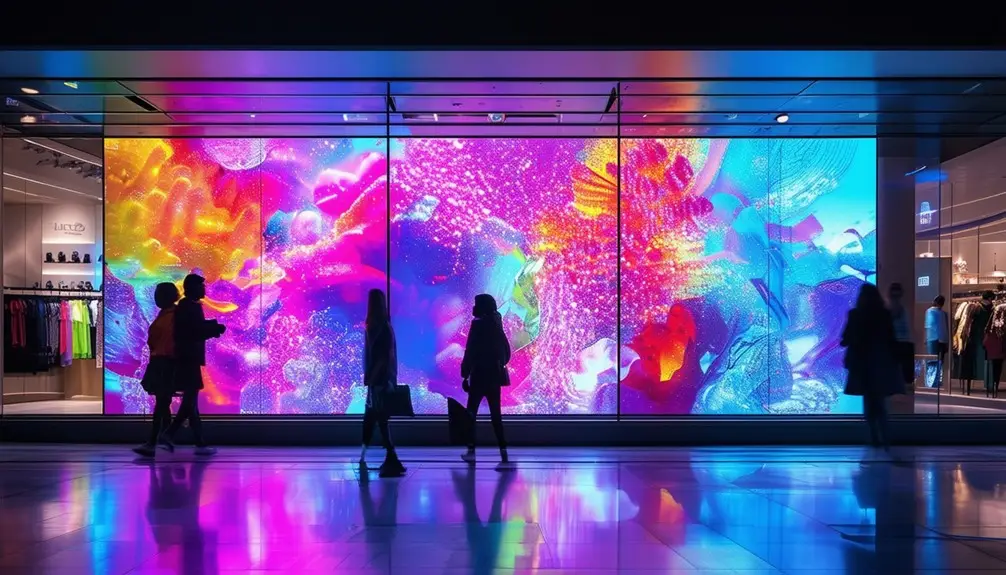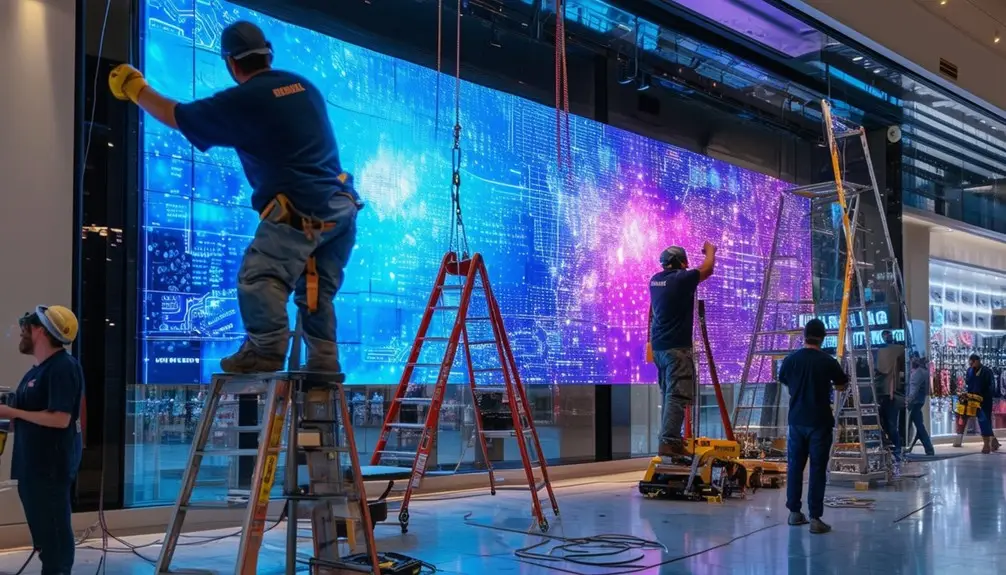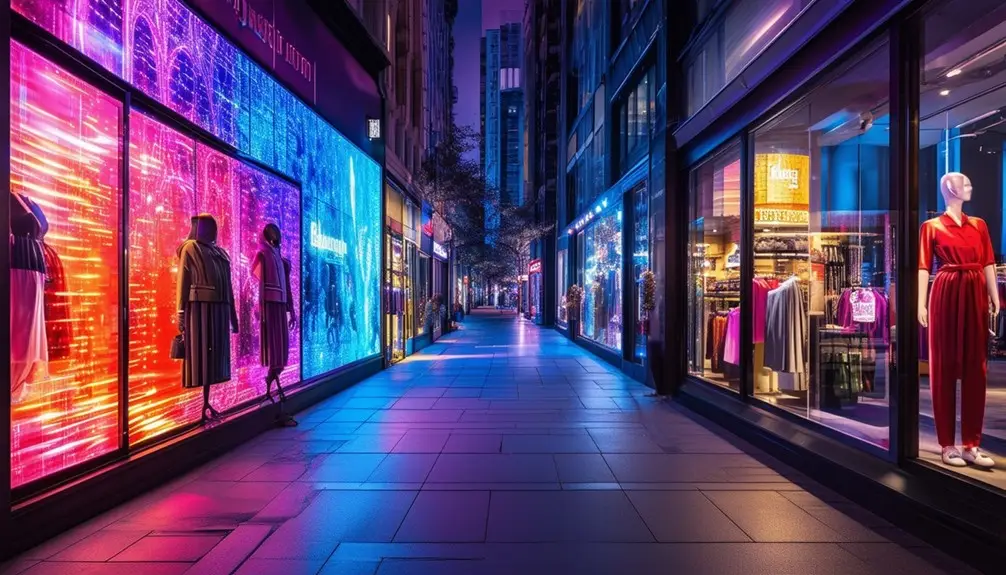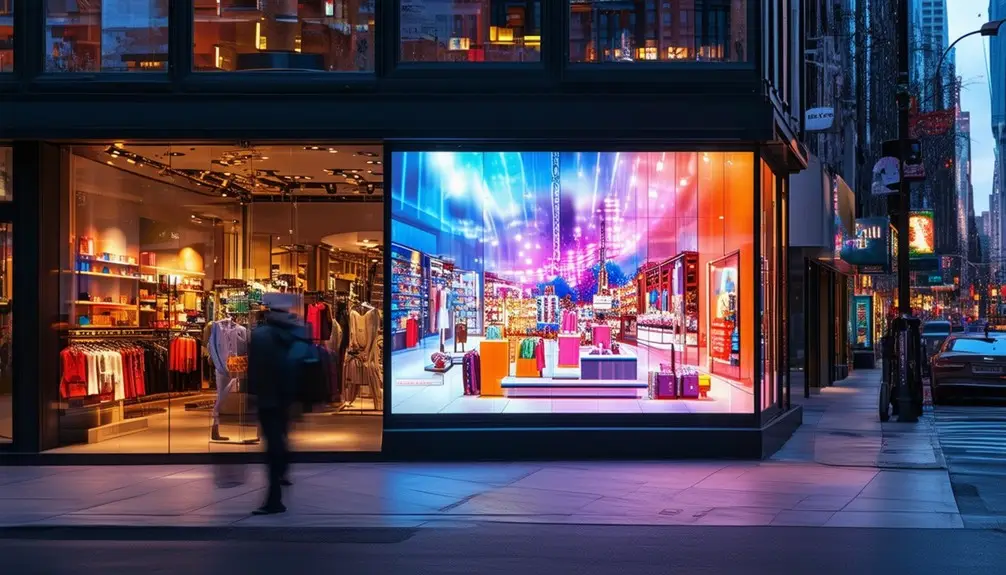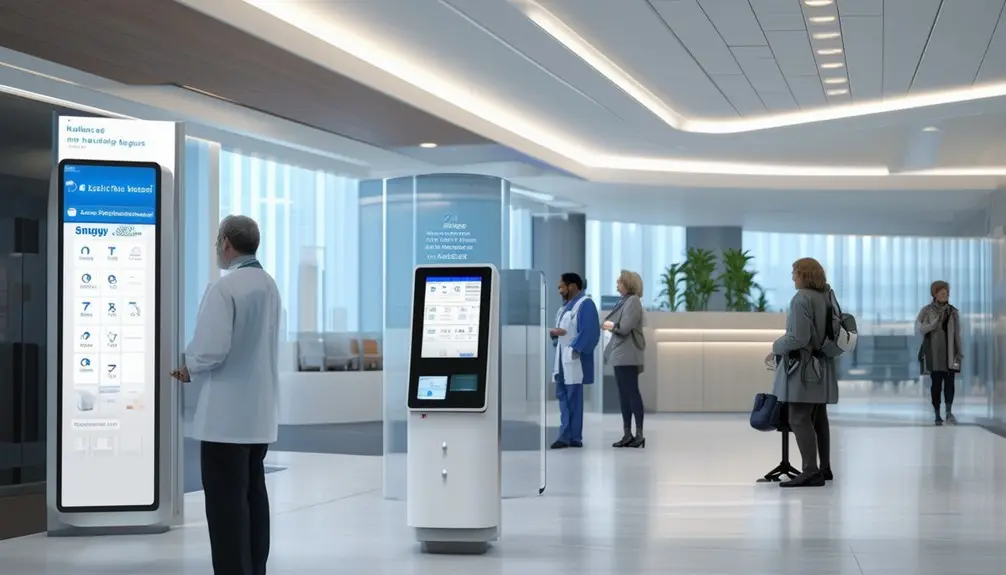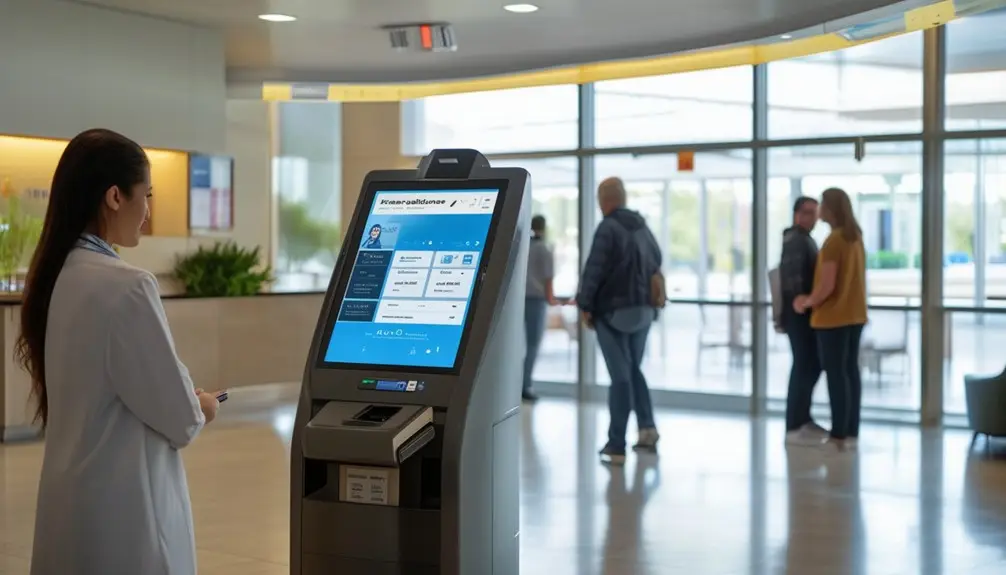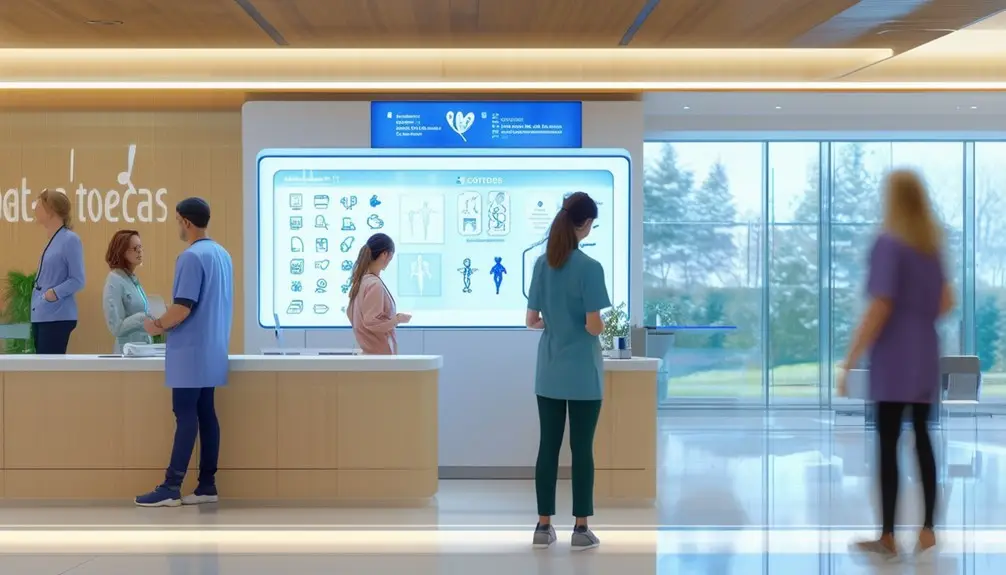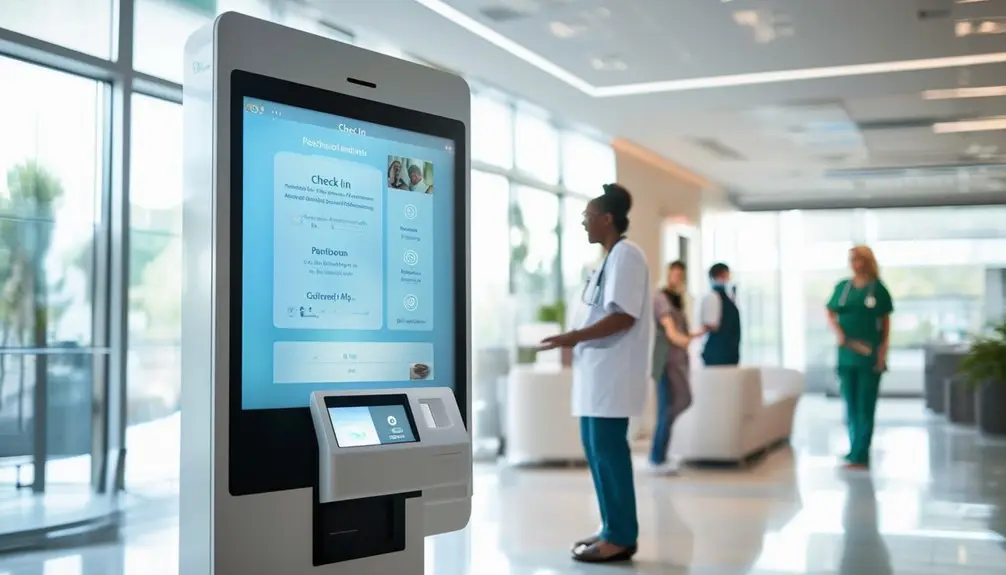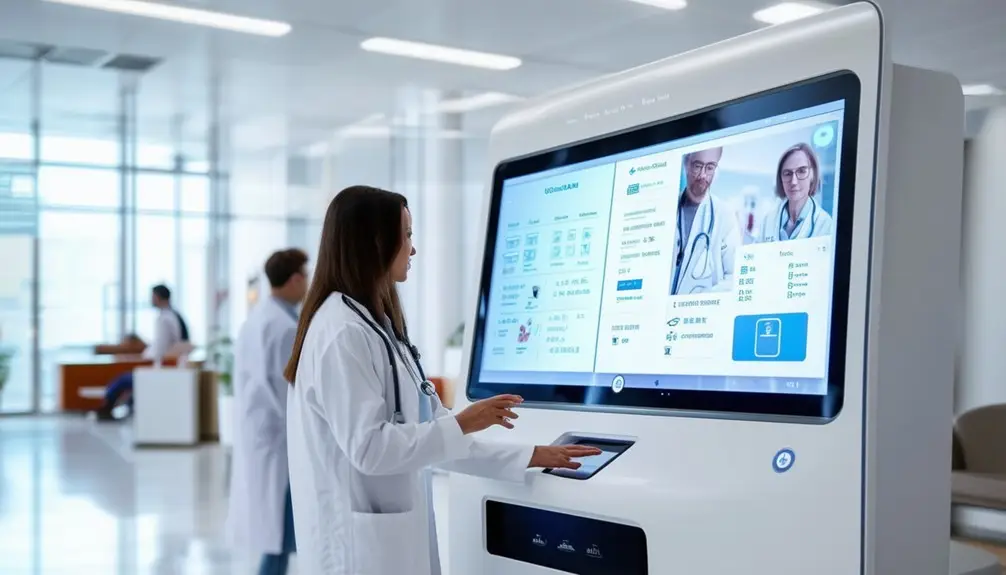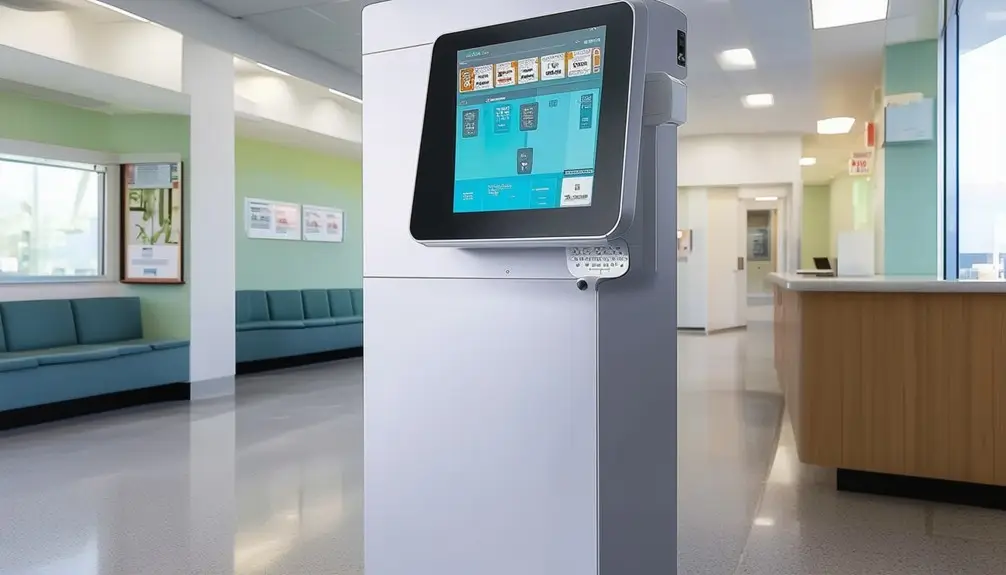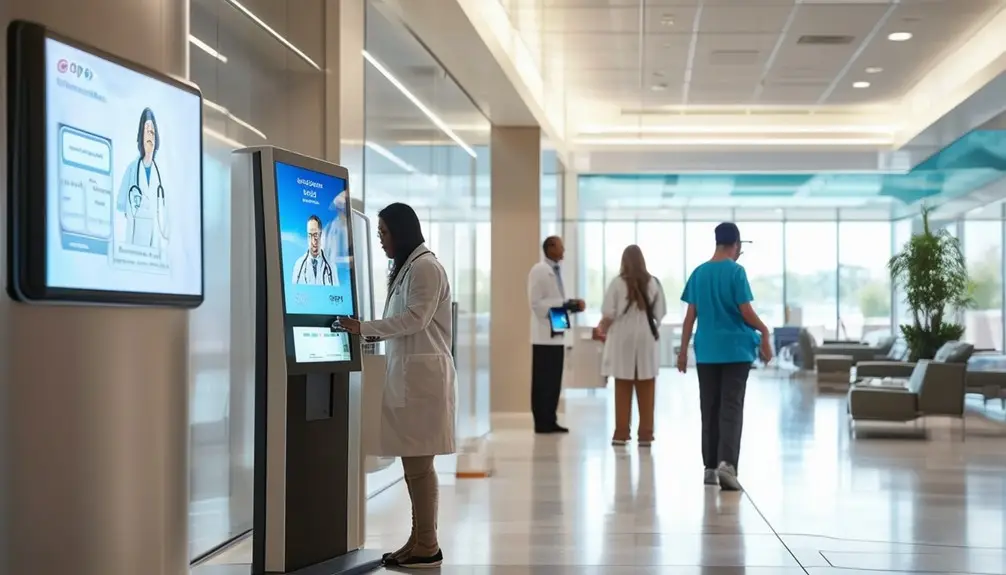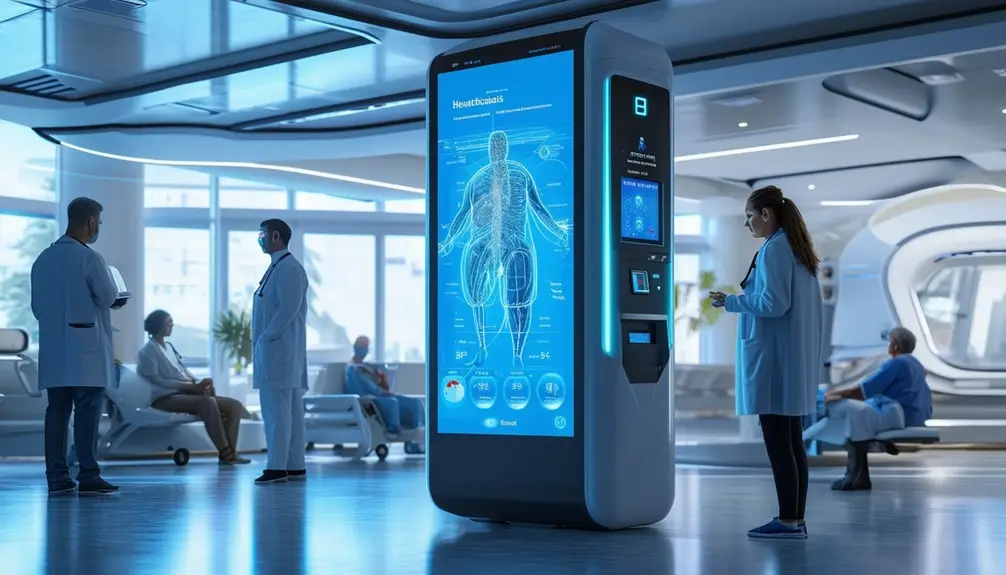Boost employee engagement by 20% utilizing digital signs to display up-to-the-minute corporate information. These signs provide immediate updates, improving clarity and reducing email overwhelm. With live event streams and interactive sales dashboards, your content remains captivating and up-to-date. Social media walls featuring user-created content can enhance trust by 79%, while current data dashboards offer crucial business insights. Integration with CRM and HRMS systems guarantees smooth data flow, keeping all individuals informed and inspired. Interested in enhancing your corporate communication and leveraging these tactical advantages? There's more to discover.
Key Takeaways
- Real-time digital signage broadcasts live content like event streams and dynamic dashboards.
- Digital signs enhance transparency by displaying up-to-date corporate information and metrics.
- Instant communication via digital signs reduces email overload and boosts message retention.
- Integration with CRMs and HRMS ensures seamless, automated updates on digital signs.
- Social media walls on digital signs increase engagement by showcasing user-generated content in real-time.
Benefits of Real-Time Corporate Info
Displaying current corporate information on digital signs can boost employee engagement by an impressive 20%. When you leverage real-time content for digital displays, you provide instant communication of vital updates and announcements. This not only keeps everyone in the loop but also greatly enhances transparency within your organization. Employees feel more connected and informed, fostering a sense of community and shared purpose.
By delivering information on digital platforms, you also alleviate the burden of email overload. Instead of sifting through crowded inboxes, your team can quickly absorb key messages from digital signs. This method increases message retention and ensures that important information isn't lost in the daily email deluge.
Moreover, having quick access to real-time corporate info directly impacts decision-making and operational efficiency. When your team can see updated metrics, project statuses, or company news at a glance, they can react promptly and make more informed choices. This real-time content for digital displays provides a strategic advantage by keeping everyone aligned and responsive.
Types of Real-Time Content
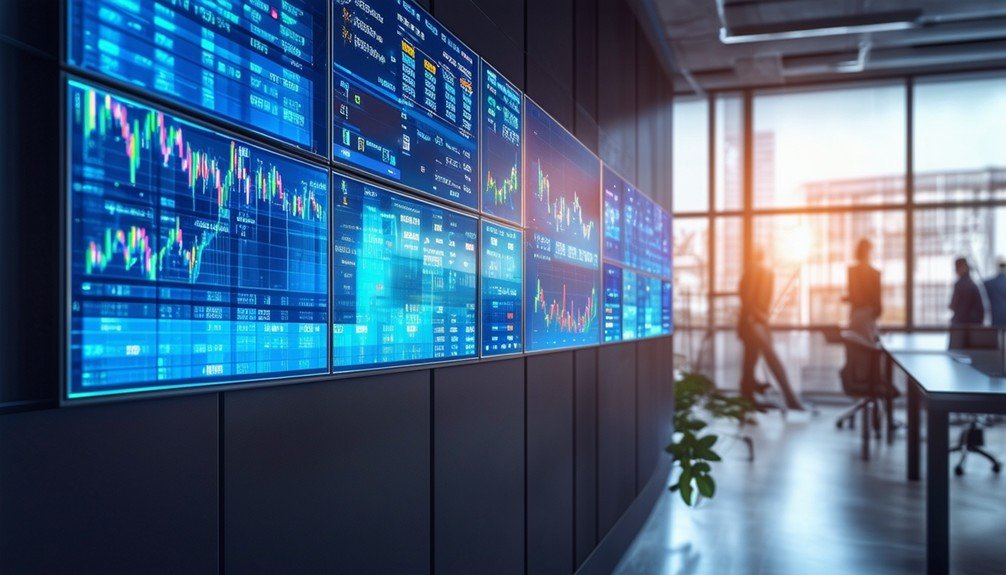
Real-time content for digital signage, such as live event streaming and dynamic sales dashboards, keeps your displays vibrant and your audience engaged. Leveraging real-time digital signage, you can broadcast live content like event streams, offering viewers an immediate connection to ongoing activities. This dynamic content guarantees your displays are always current and relevant.
Dynamic sales data dashboards provide real-time updates on performance metrics, enabling you to quickly adapt strategies based on live data. Countdown timers for promotions create a sense of urgency, driving immediate action from customers. Live social media walls showcase user-generated content, fostering community engagement and enhancing brand perception.
Emergency alerts are another essential component of real-time digital signage. These notifications provide timely information during crises, ensuring safety and compliance. Incorporating these various types of real-time content not only keeps your audience informed but also optimizes their engagement with your brand.
Live Streams
You can boost engagement by broadcasting live events through your digital signs, capturing nearly 30% of weekly viewers who prefer live content. Real-time corporate updates keep your audience informed and connected, fostering trust. Strong internet connectivity guarantees lag-free streaming, enhancing viewer interaction and satisfaction.
Engaging Live Event Broadcasts
Nearly 30% of individuals tune in to live content weekly, making live event broadcasts a strategic and engaging choice for digital signage. By integrating live streaming into your digital signage software solutions, you can provide real-time updates that captivate and inform your audience. Live streaming events like concerts, conferences, and corporate announcements can greatly enhance viewer engagement and expand your audience reach.
Here's why live event broadcasts on digital signs are a game changer:
- Increased Engagement: Live content is dynamic and interactive, keeping viewers glued to the screen.
- Audience Expansion: Live streams attract new viewers who might not otherwise attend the event in person.
- Real-Time Updates: Instant updates make certain that your audience always has the latest information, enhancing their overall experience.
- Enhanced User Experience: High-quality, lag-free streams create a seamless viewing experience, thanks to a strong internet connection.
To maximize the impact of live event broadcasts, make sure you have a reliable live-streaming platform and robust internet setup. These elements are essential for delivering smooth, high-quality content. By leveraging live streaming and digital signage software solutions, you can transform your digital signs into powerful tools for real-time engagement and communication.
Real-Time Corporate Updates
Harnessing the power of live streams for corporate updates can greatly boost engagement and keep your audience informed with the most current information. When you incorporate real-time content in digital formats, you're tapping into a method that nearly 30% of people engage with weekly. Live digital signage is an excellent way to broadcast corporate events, conferences, and updates, ensuring your audience gets the latest info without delay.
To achieve this, you need reliable digital signage solutions and a strong internet connection to avoid any lag or interruptions. The immediacy of live streaming not only enhances engagement but also improves user experience, attracting new audiences to your corporate content. Here's a quick comparison to illustrate the benefits:
| Aspect | Traditional Updates | Live Streaming |
|---|---|---|
| Engagement Level | Moderate | High |
| Audience Reach | Limited | Expansive |
| Information Accuracy | Potentially Outdated | Real-Time |
| User Experience | Passive | Interactive |
| Influence on Decisions | Slower Impact | Immediate Impact |
Enhanced Audience Interaction
Interactive live streams on digital signs can greatly boost audience engagement by providing immediate, engaging experiences that enhance user participation and interest. Leveraging live updates and real-time data, these digital signs transform passive viewers into active participants, driving deeper connections and heightened interest.
To maximize the impact, consider the following strategies:
- Choose a reliable platform: Ensure the live-streaming service is robust and dependable, minimizing disruptions and maintaining a seamless viewer experience.
- Optimize internet connectivity: A strong and stable internet connection is essential for delivering lag-free content, keeping your audience engaged and reducing frustrations.
- Utilize interactive features: Encourage participation through polls, Q&A sessions, and real-time feedback, making the experience more immersive and dynamic.
- Target high-engagement events: Use live streams for events like concerts, conferences, or product launches, which naturally attract more viewers and heighten engagement.
Real-time content like live streams can increase user interaction by up to 45%, significantly influencing purchasing decisions in retail environments. By integrating interactive live streams into your digital signage strategy, you're not just broadcasting information—you're fostering an interactive, engaging space that dynamically responds to your audience, ultimately driving greater engagement and interest.
Social Media Walls
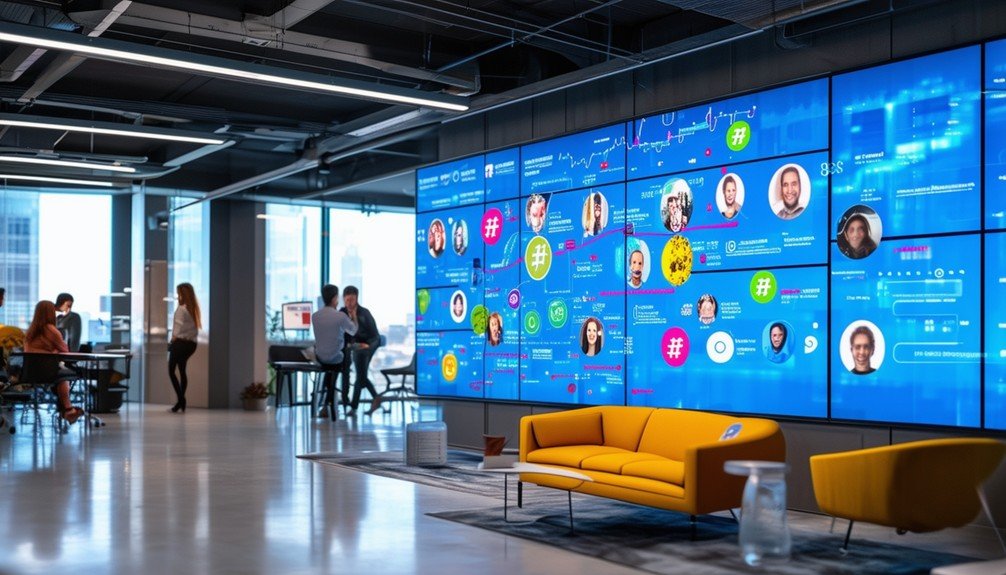
Social media walls on digital signs instantly display live feeds, keeping your audience informed and engaged with the latest company updates. By showcasing live social media, you can create a dynamic and interactive environment that captures attention. These walls are perfect for engaging with audiences, as they highlight user-generated content, encouraging more followers to participate in the conversation.
Imagine your digital sign displaying real-time tweets, Instagram posts, or Facebook updates. This not only keeps your content fresh but also showcases industry trends and news, adding value to your audience's experience. Social media walls enhance your marketing efforts by leveraging user-generated content, which has been shown to increase trust and authenticity. According to a recent study, 79% of people say user-generated content highly impacts their purchasing decisions.
Strategically, social media walls can significantly boost activity on your company's social media platforms. They create a feedback loop where users are motivated to engage more, knowing their content might be featured. This increased activity can lead to higher visibility and stronger community ties. So, don't underestimate the power of social media walls—they're a valuable tool for enhancing customer engagement and sharpening your marketing strategies.
Real-Time Data Dashboards
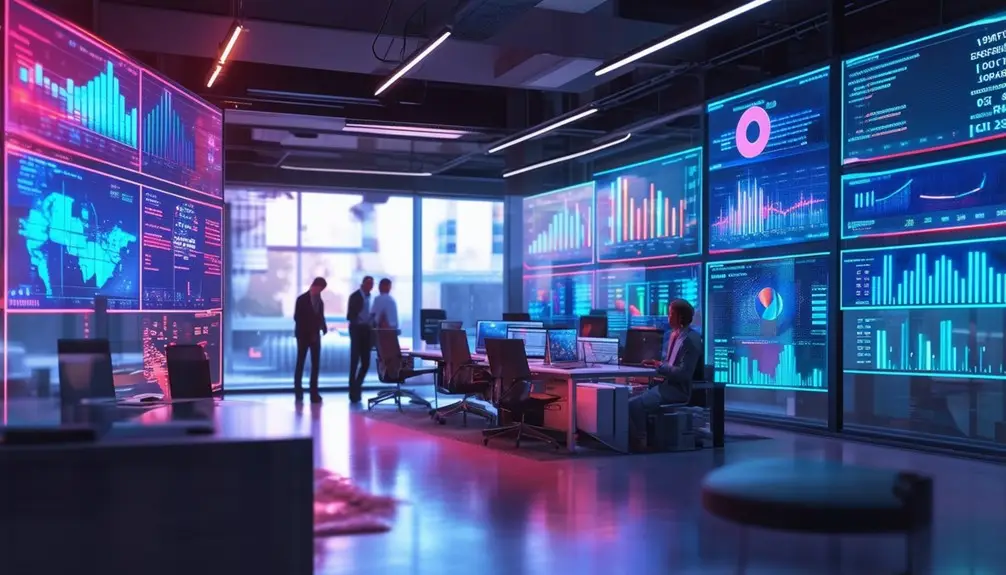
You'll find that real-time data dashboards are game-changers for tracking key business performance metrics and sales data. By integrating with your internal tools, these dashboards provide instant insights that drive strategic decisions. Keep your team informed and motivated with dynamic, up-to-the-minute information displayed on digital screens.
Business Performance Metrics
Real-time data dashboards offer a strategic advantage by providing immediate insights into essential business metrics like sales performance, customer satisfaction, and employee productivity. By integrating with CRMs and ERPs, these dashboards guarantee the data you see is both accurate and up-to-date. This integration transforms raw data into actionable insights, allowing you to make informed decisions quickly.
Here are four reasons why embracing real-time data dashboards is vital for your business:
- Instant Performance Tracking: Monitor key performance indicators (KPIs) as they occur, so you can respond to changes immediately.
- Enhanced Transparency: Promote a culture of openness and accountability by making performance metrics visible to all stakeholders.
- Dynamic Visualizations: Identify patterns and trends through engaging, easy-to-understand visuals that help you pinpoint areas for improvement.
- Data-Driven Decisions: Make strategic choices based on real-time insights, reducing the guesswork and improving overall efficiency.
With real-time data at your fingertips, you can keep a pulse on your business performance metrics, ensuring you're always one step ahead. The integration with CRMs and ERPs means that the data is not only timely but also inclusive, offering a holistic view of your organizational health.
Real-Time Sales Data
When you leverage real-time sales data dashboards, you gain immediate visibility into sales performance, enabling swift and informed decision-making. These dashboards integrate seamlessly with your POS systems, ensuring that every transaction contributes to up-to-the-minute sales metrics. By having access to real-time information, you can quickly identify trends, spot potential issues, and capitalize on emerging opportunities.
The integration of real-time data means you're no longer relying on outdated reports or guesswork. Instead, you can make data-driven decisions that optimize your sales strategies and drive revenue growth. Interactive elements within these dashboards allow you to drill down into specific metrics, helping you understand the nuances of your sales performance. Is a particular product suddenly surging in popularity? Are certain times of the day yielding higher sales? With real-time sales data, you can answer these questions and more.
Furthermore, these dashboards empower your team to be more proactive. They can adjust tactics on the fly, reallocate resources, and respond to market changes instantly. Ultimately, real-time sales data dashboards transform raw data into actionable insights, helping you stay ahead of the competition and ensuring your business thrives.
Integration With Other Systems
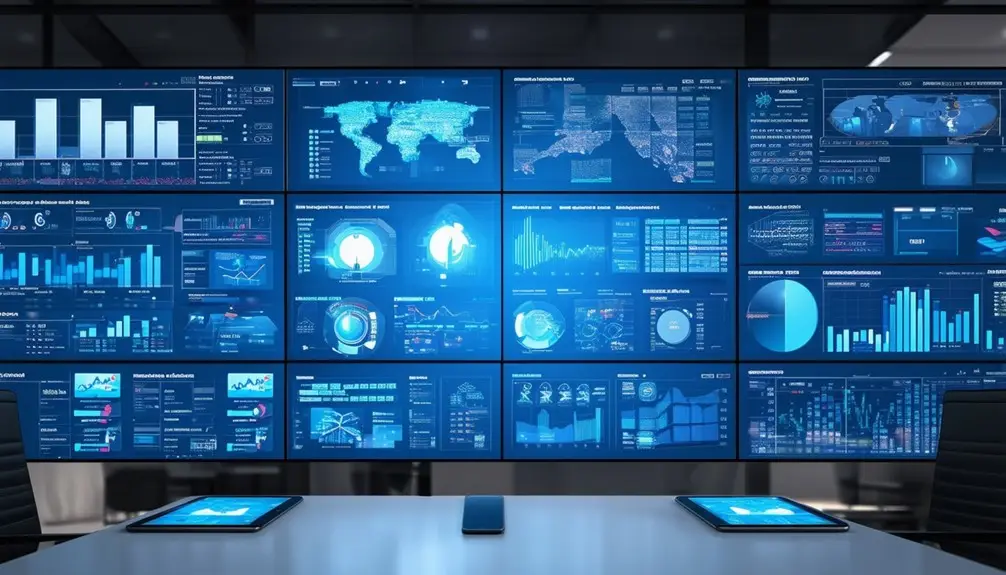
Seamless integration with other systems guarantees digital signs display real-time corporate information, enhancing both transparency and efficiency. By leveraging API integrations, you can connect digital signage with internal tools like CRMs and HRMS, enabling real-time updates that secure accurate and timely information delivery.
Here's how integration with other systems can transform your corporate communication:
- Real-Time Dashboards: Instantly display business insights and productivity metrics, allowing employees to stay informed and aligned with corporate goals.
- Consistent Messaging: Align corporate messaging with current events and trends, securing the information is both relevant and timely.
- Enhanced Transparency: Provide employees and visitors with up-to-date information, fostering a culture of openness and trust within your organization.
- Improved Efficiency: Reduce manual updates and administrative overhead by automating data flow from existing systems to digital signage.
API integrations form the backbone of this seamless connectivity, making it easier than ever to pull data from multiple internal systems and display it on your digital signs. This strategic approach not only boosts operational efficiency but also enhances the overall employee experience by keeping everyone in the loop with real-time updates.
Frequently Asked Questions
What Is Real Time in Digital Signage?
Real-time in digital signage means you're displaying constantly updated information instantly. You'll see live data feeds, immediate content shifts, and dynamic updates triggered by events, ensuring your audience gets the most current and engaging content.
What Is Dynamic Digital Signage?
Ever wondered if dynamic digital signage could revolutionize your information display? It's screens that update automatically based on real-time data, keeping your audience engaged with live updates, social media feeds, and more, all strategically delivered.
Why Are Digital Signs an Accurate and Reliable Way to Record and Send Information?
You'll find digital signs accurate and reliable because they pull live data feeds directly, eliminating manual errors. They keep your information current, ensuring you always have the most up-to-date metrics for strategic decision-making.
What Is Interactive Digital Signage?
Did you know 70% of shoppers say interactive digital signs improve their experience? Interactive digital signage lets you engage with content, providing real-time info, maps, and directories. It's strategic for personalized engagement and data collection.
Conclusion
Incorporating digital signs that display real-time corporate info can enhance employee engagement by up to 25%, according to recent studies. You'll be able to showcase dynamic content like live streams, social media walls, and real-time data dashboards that keep everyone informed and motivated. By integrating these systems, you'll guarantee seamless communication and a more connected workplace. Don't miss out on the chance to elevate your corporate environment with strategic, data-driven digital displays.
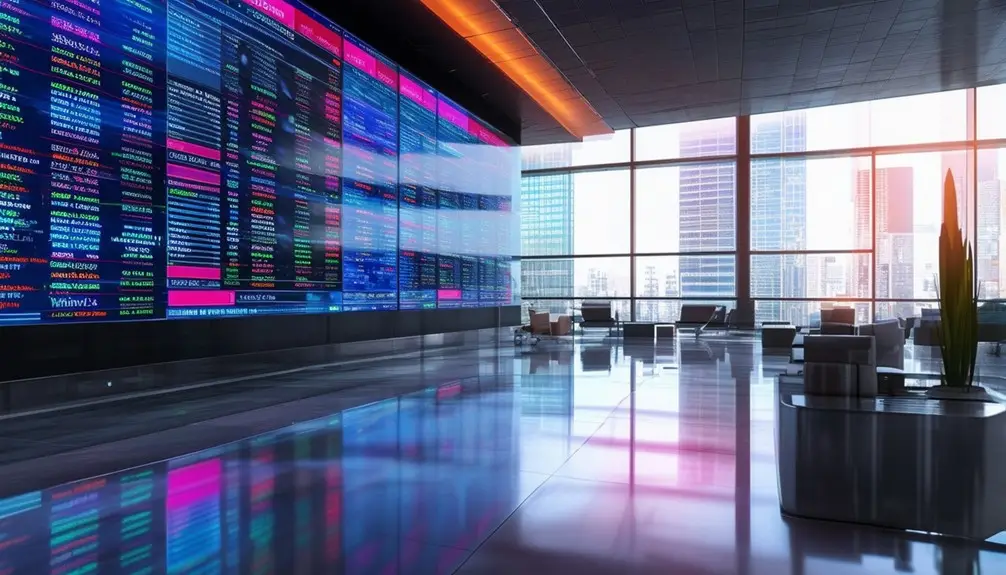
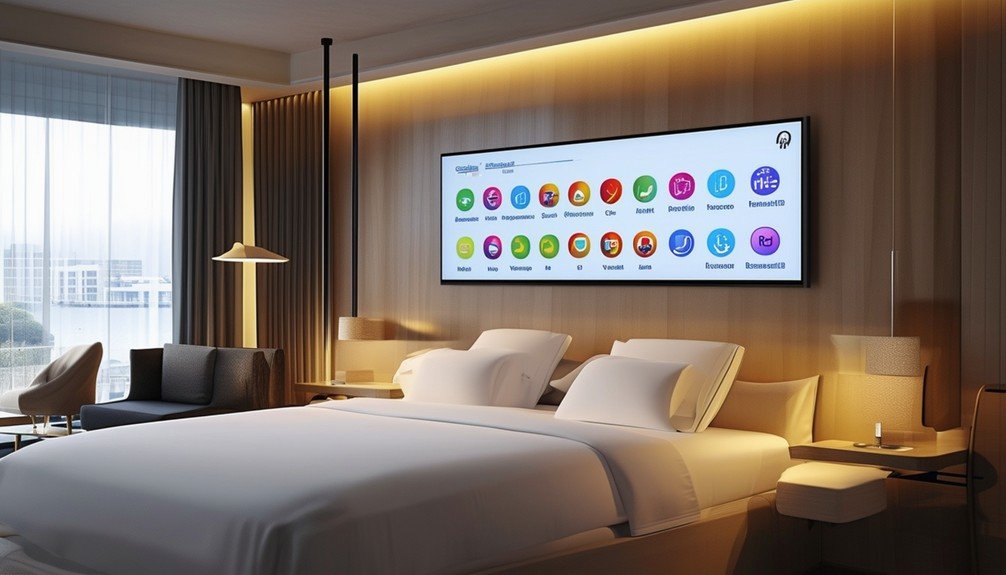
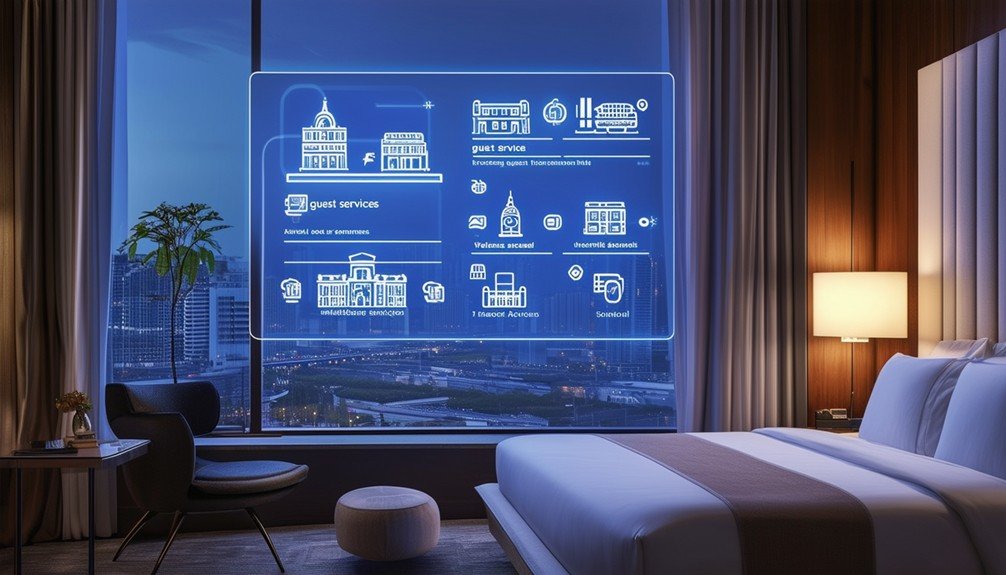
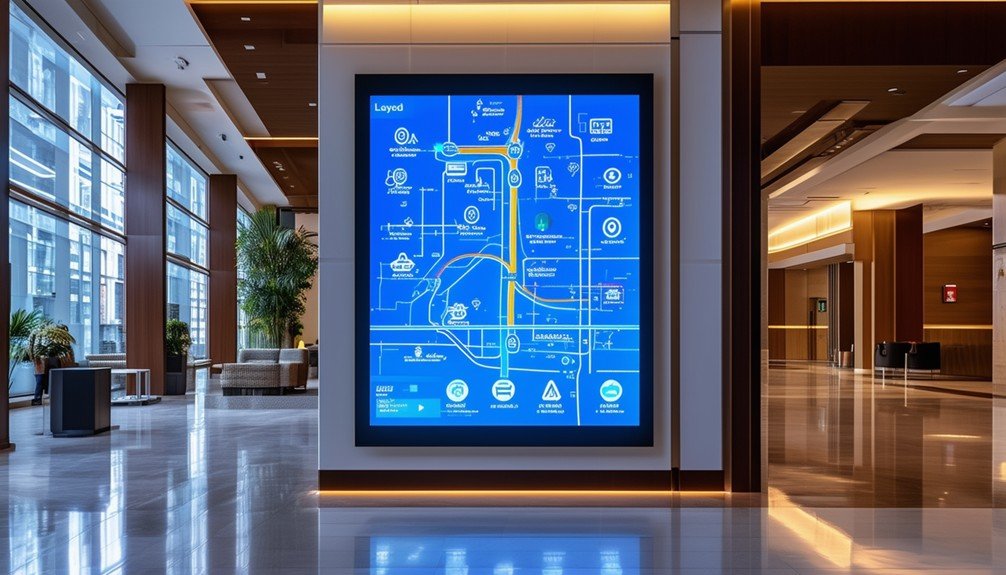
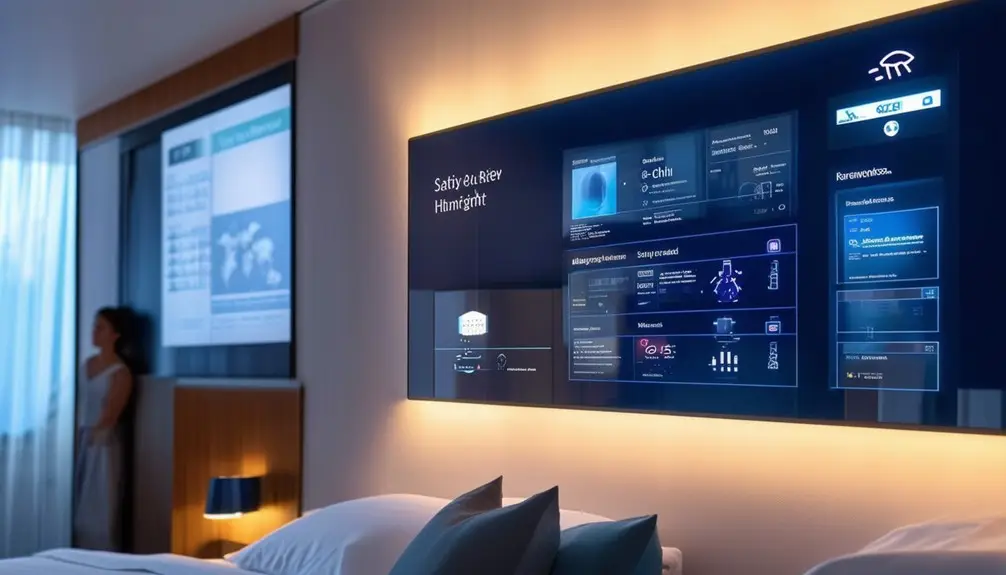
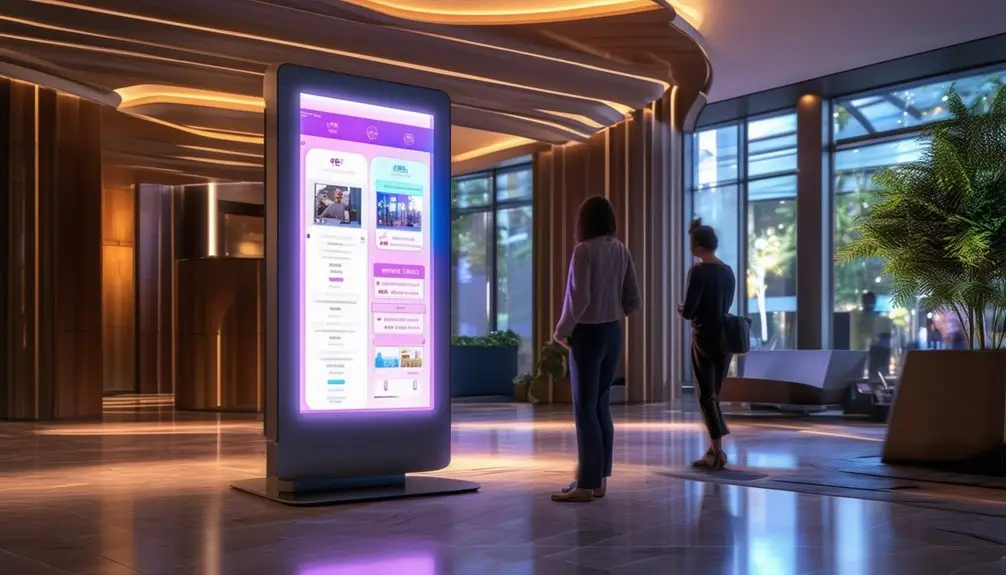
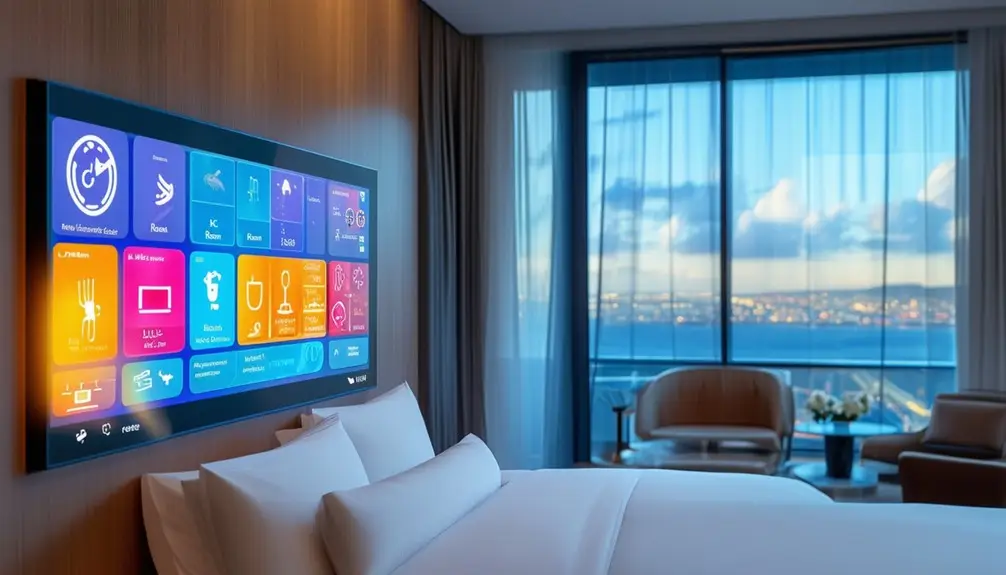

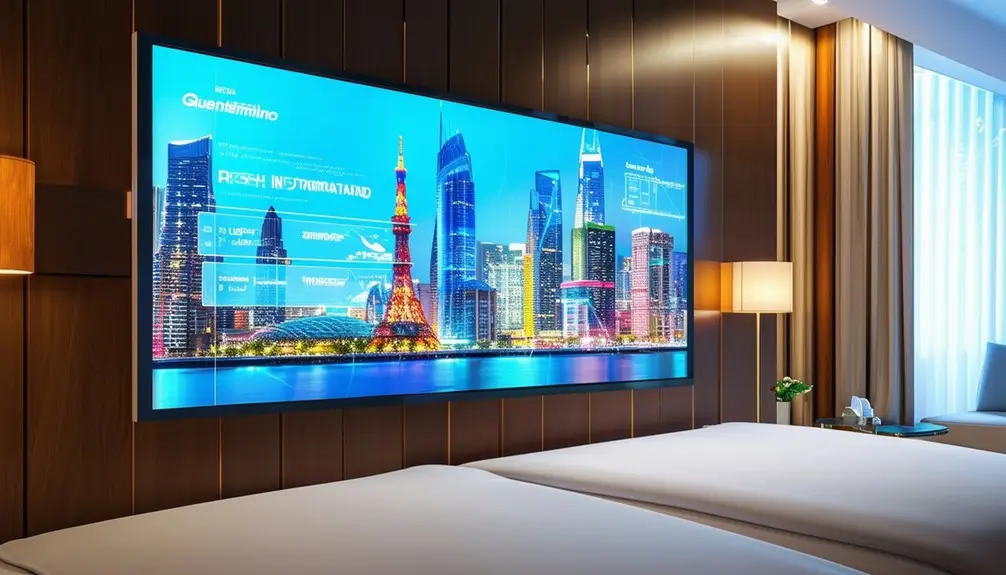
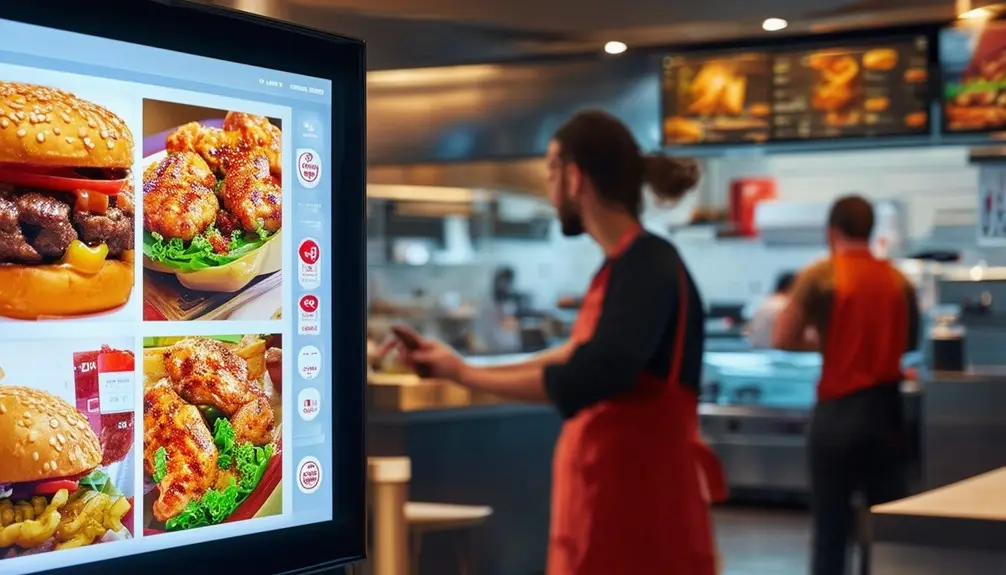
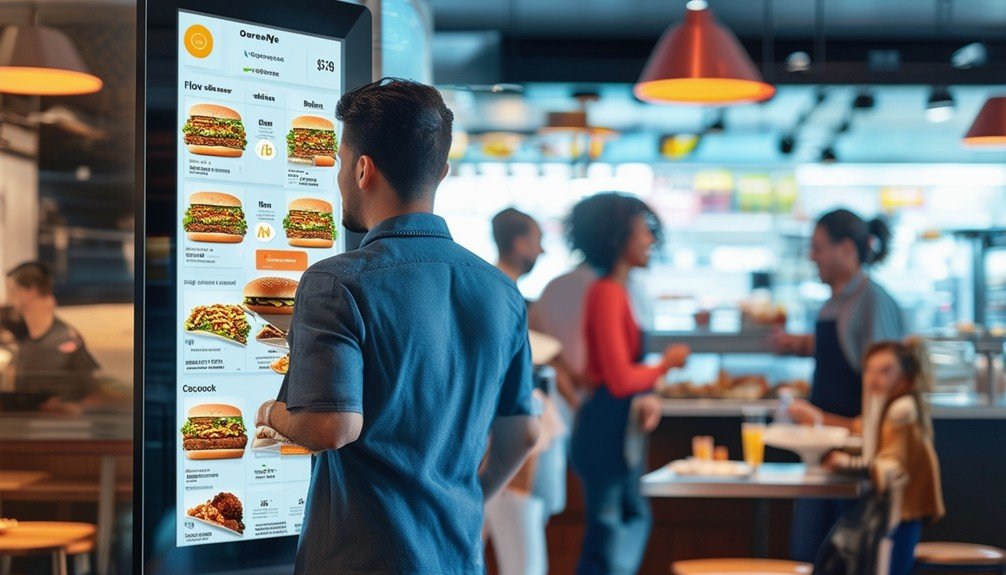


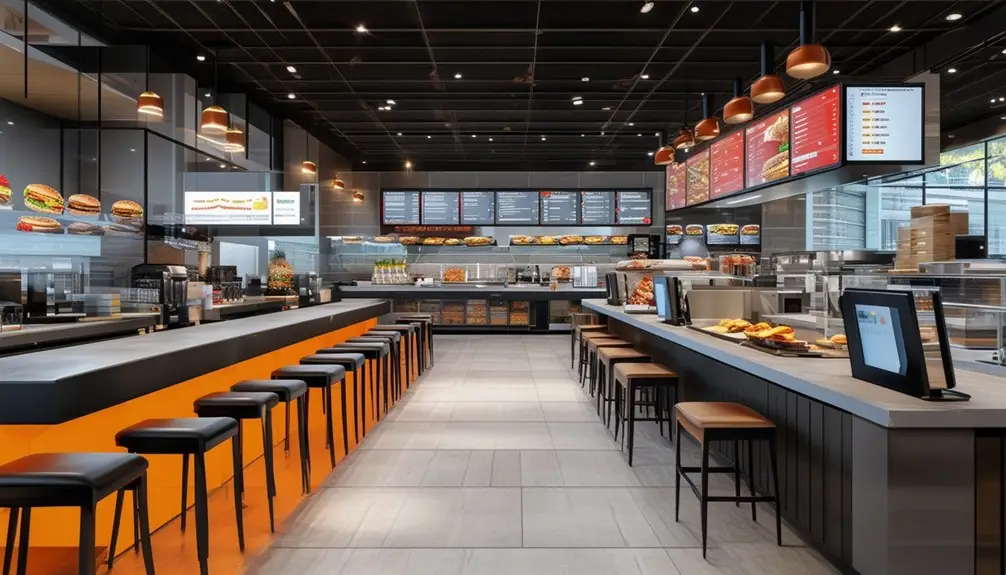
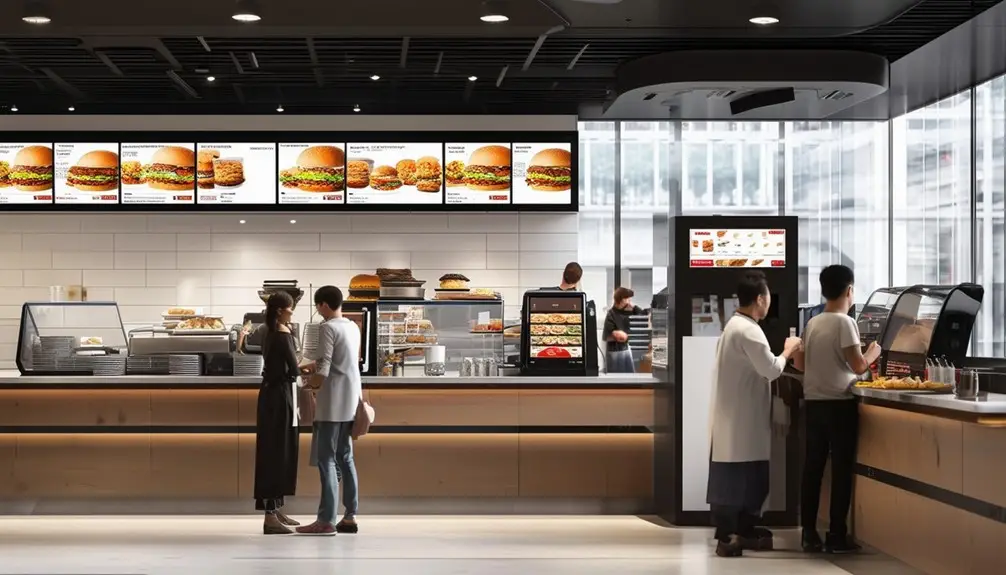
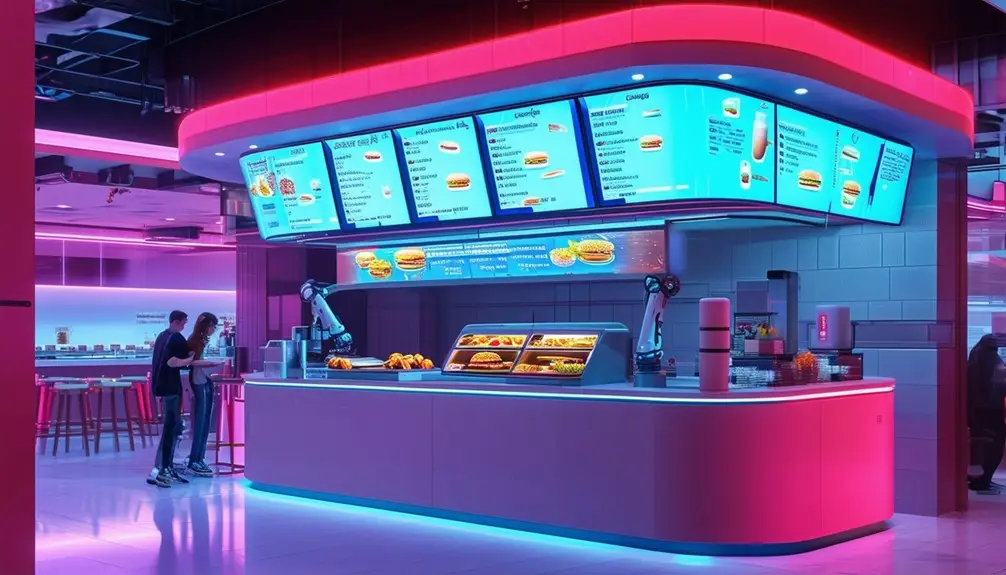
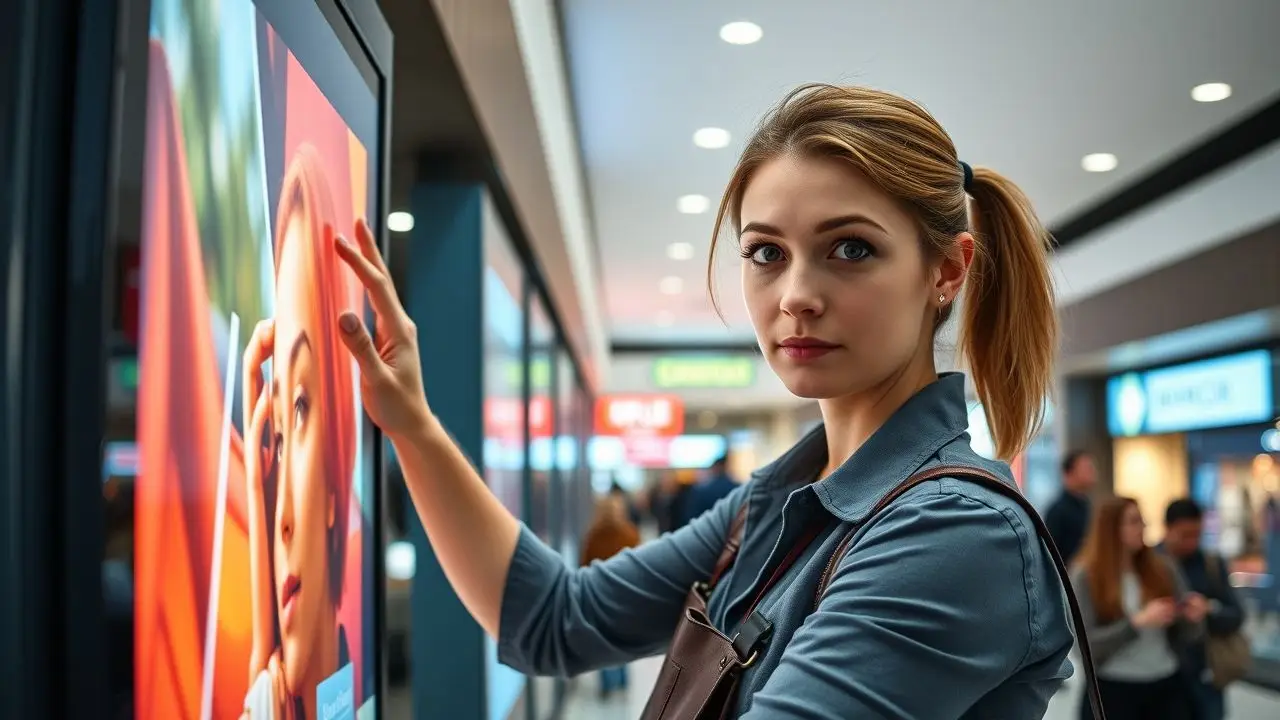

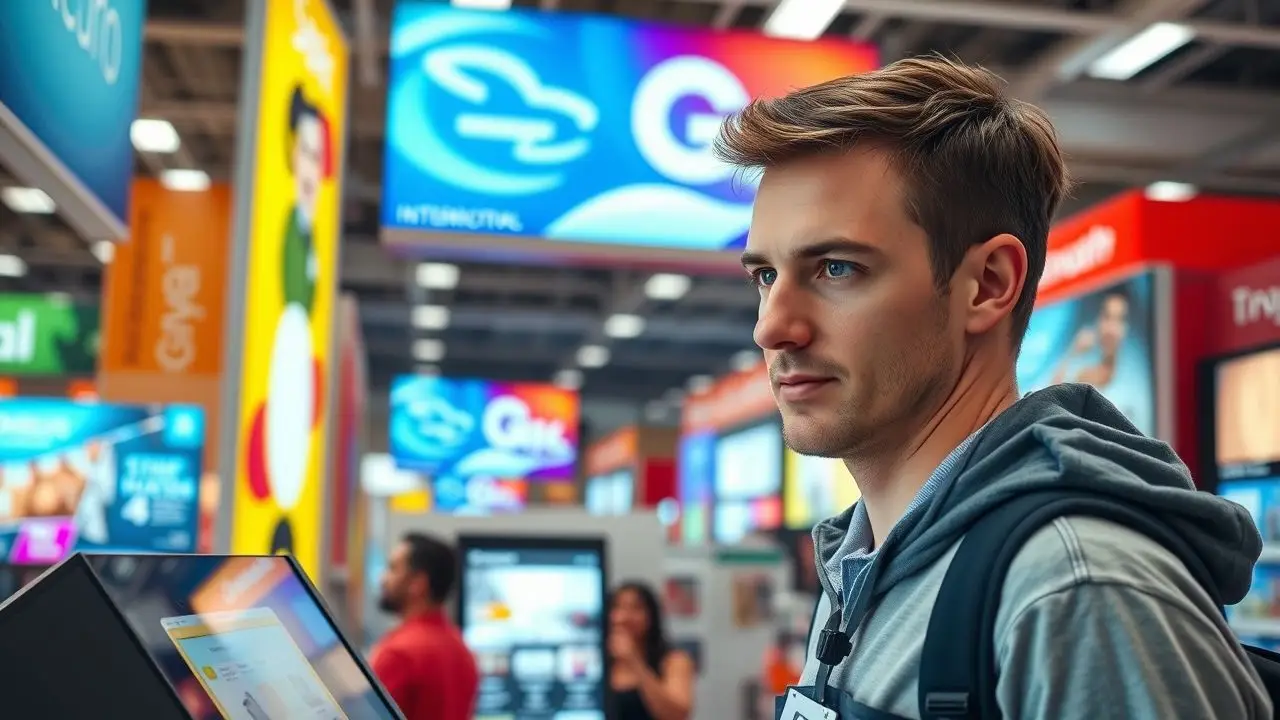
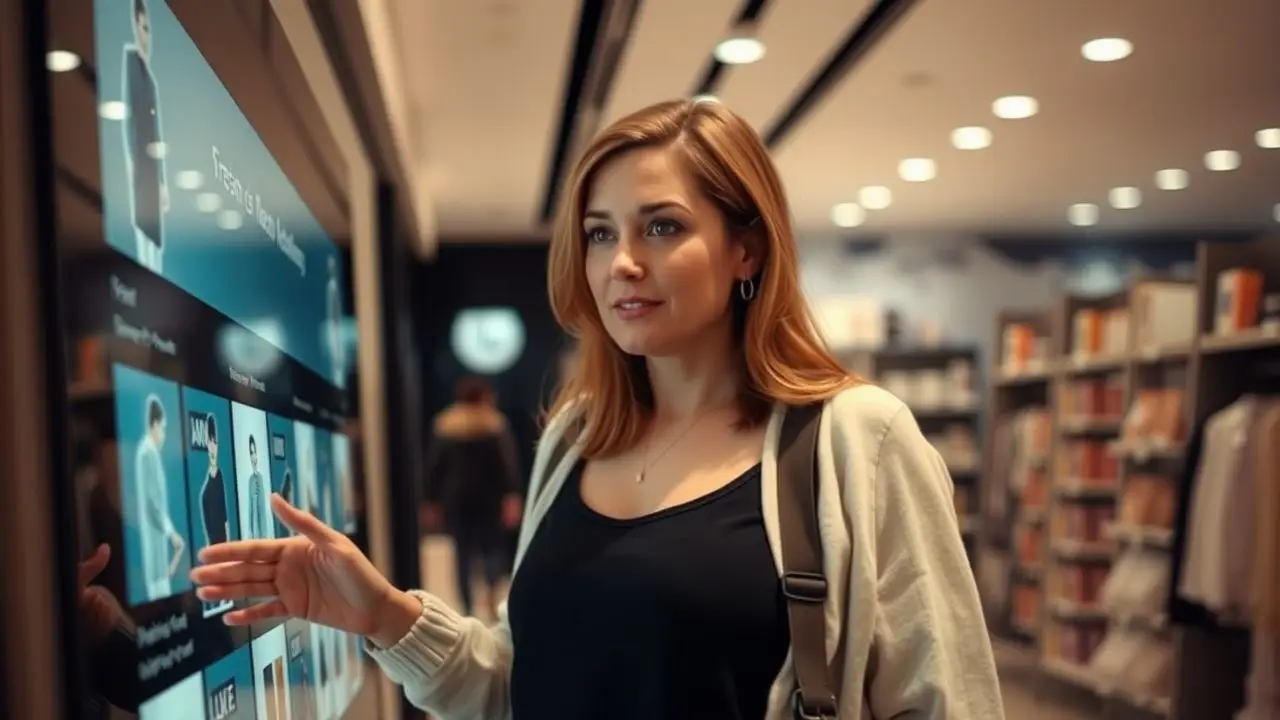
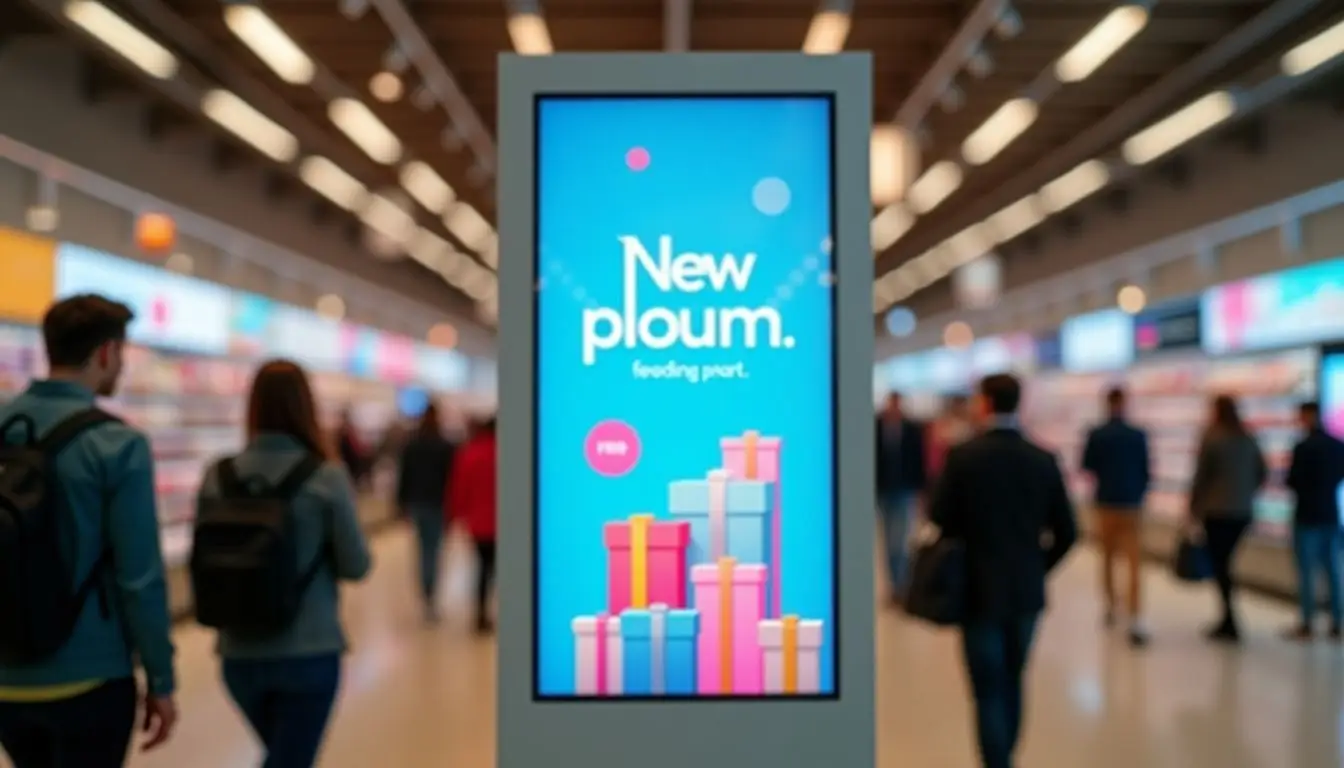


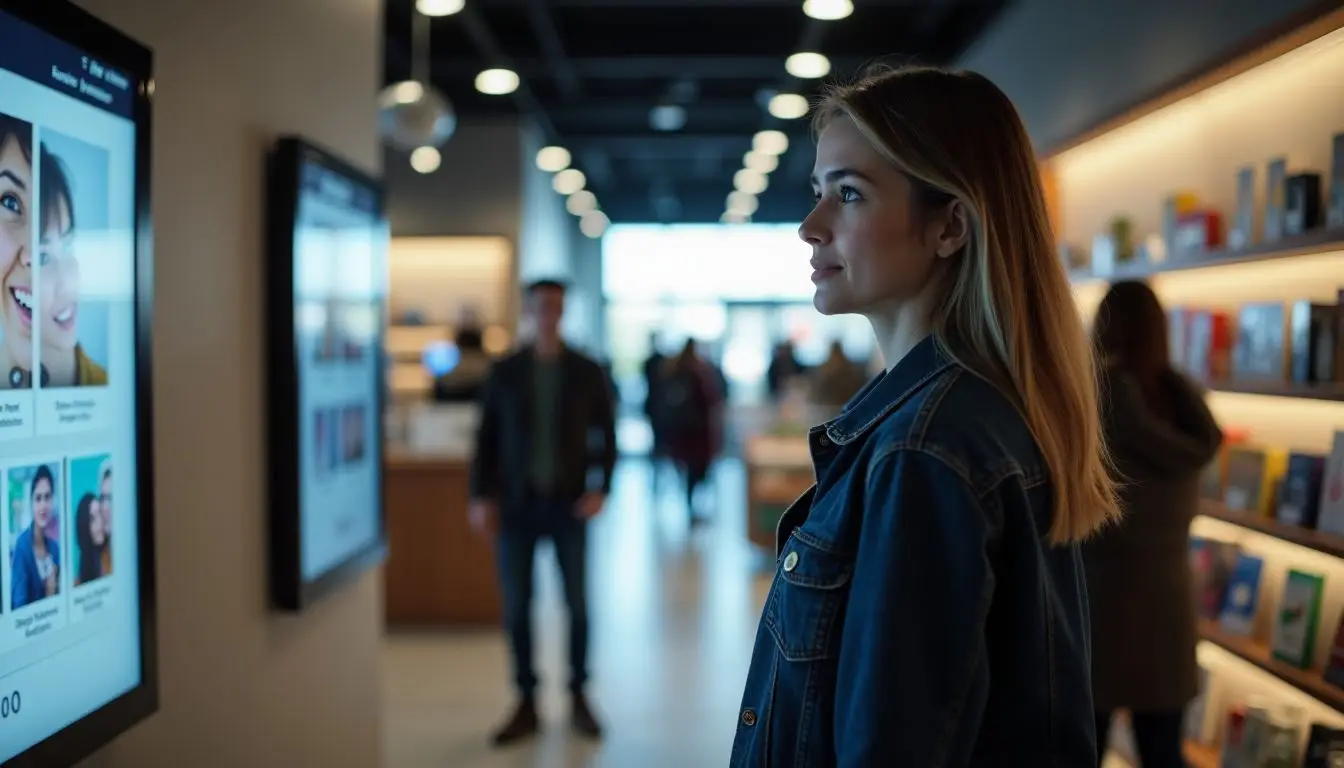



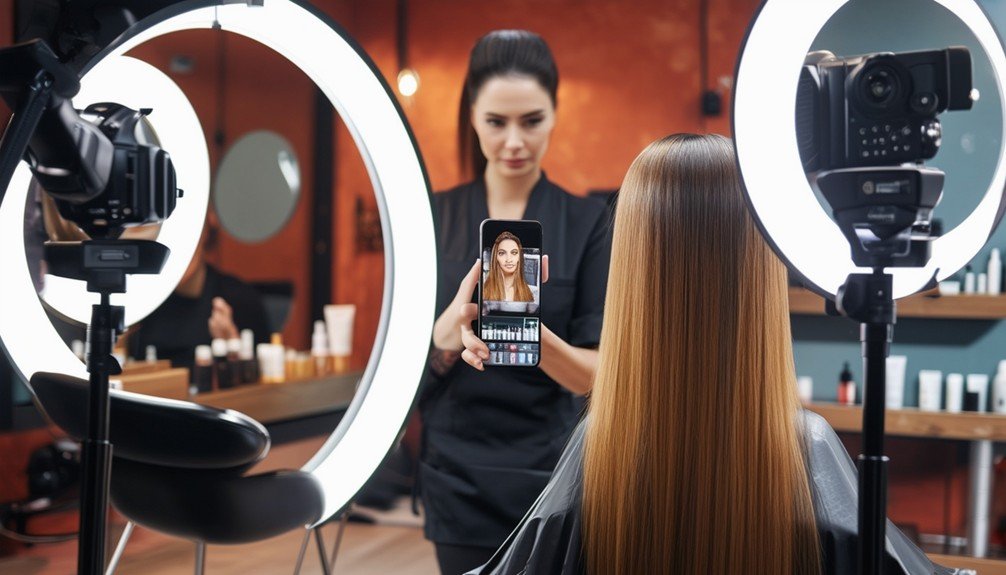
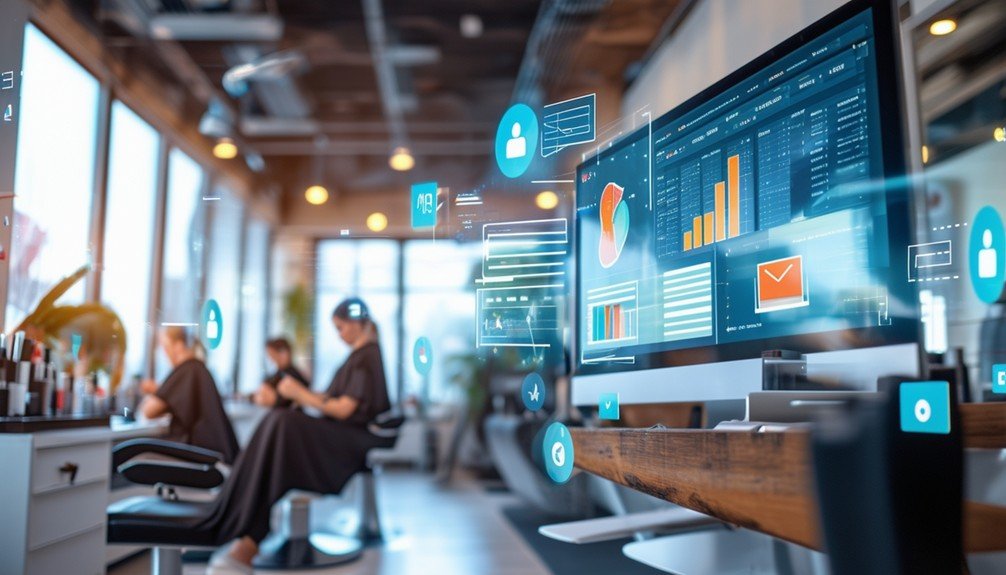
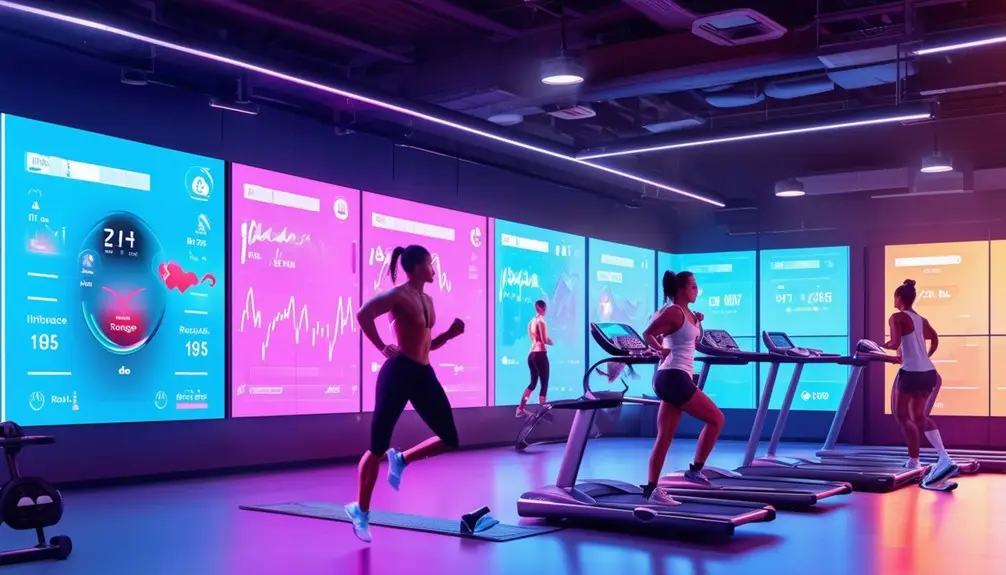
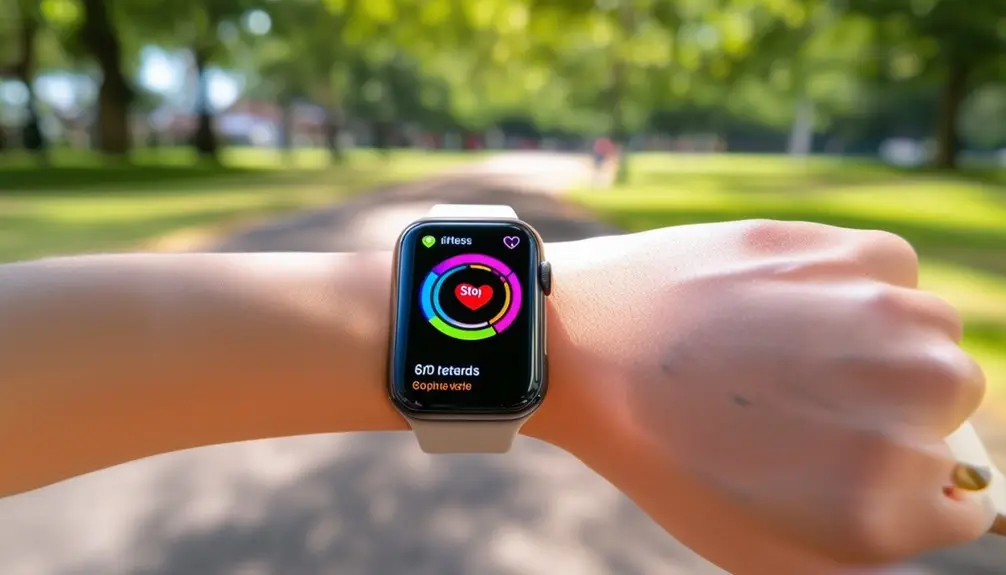
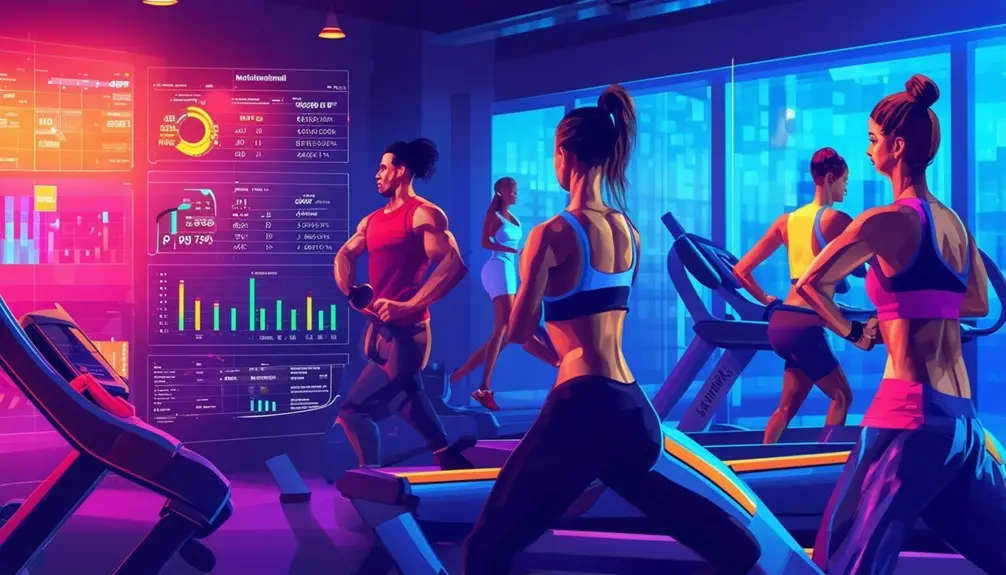
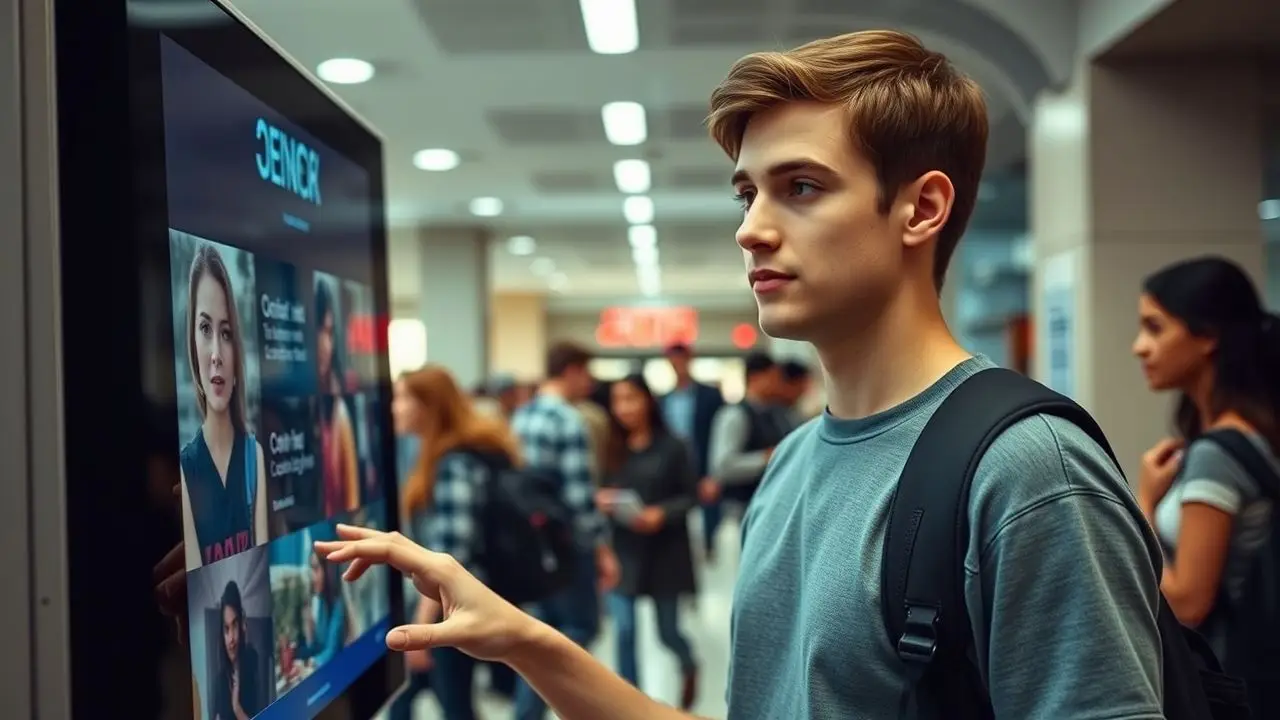


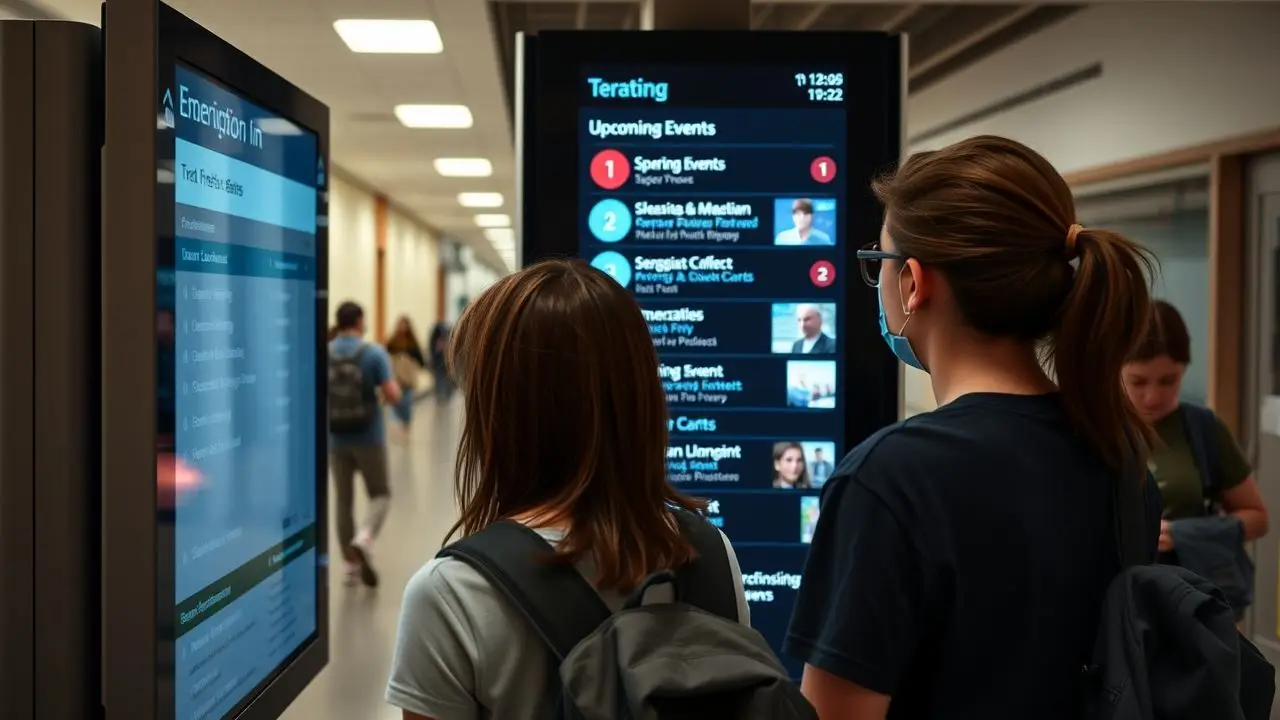
 Emergency notifications are vital for keeping students and staff safe. Digital signage can quickly display alerts about threats, severe weather, or other urgent issues. This ensures everyone knows what to do in an emergency.
Emergency notifications are vital for keeping students and staff safe. Digital signage can quickly display alerts about threats, severe weather, or other urgent issues. This ensures everyone knows what to do in an emergency.